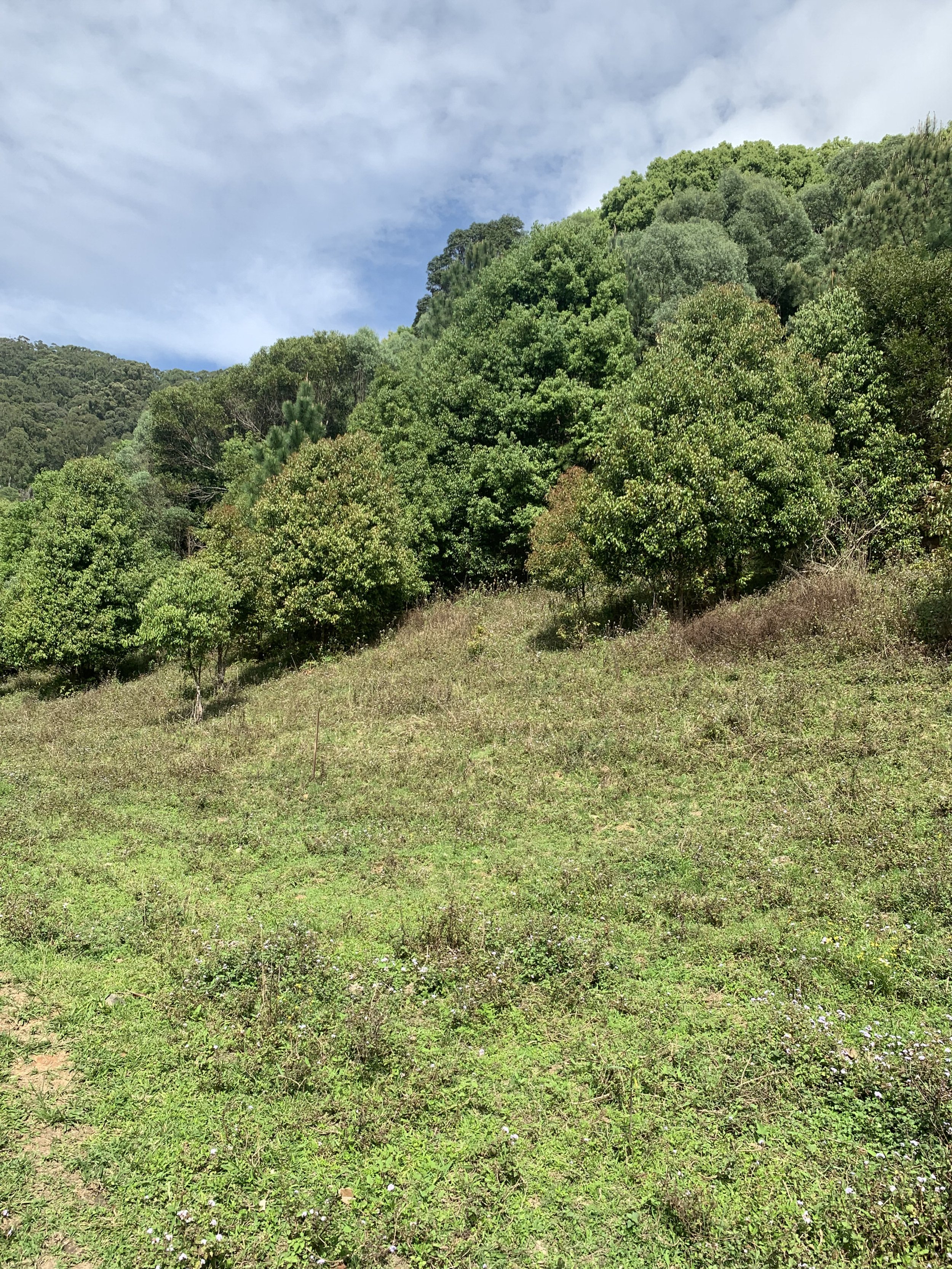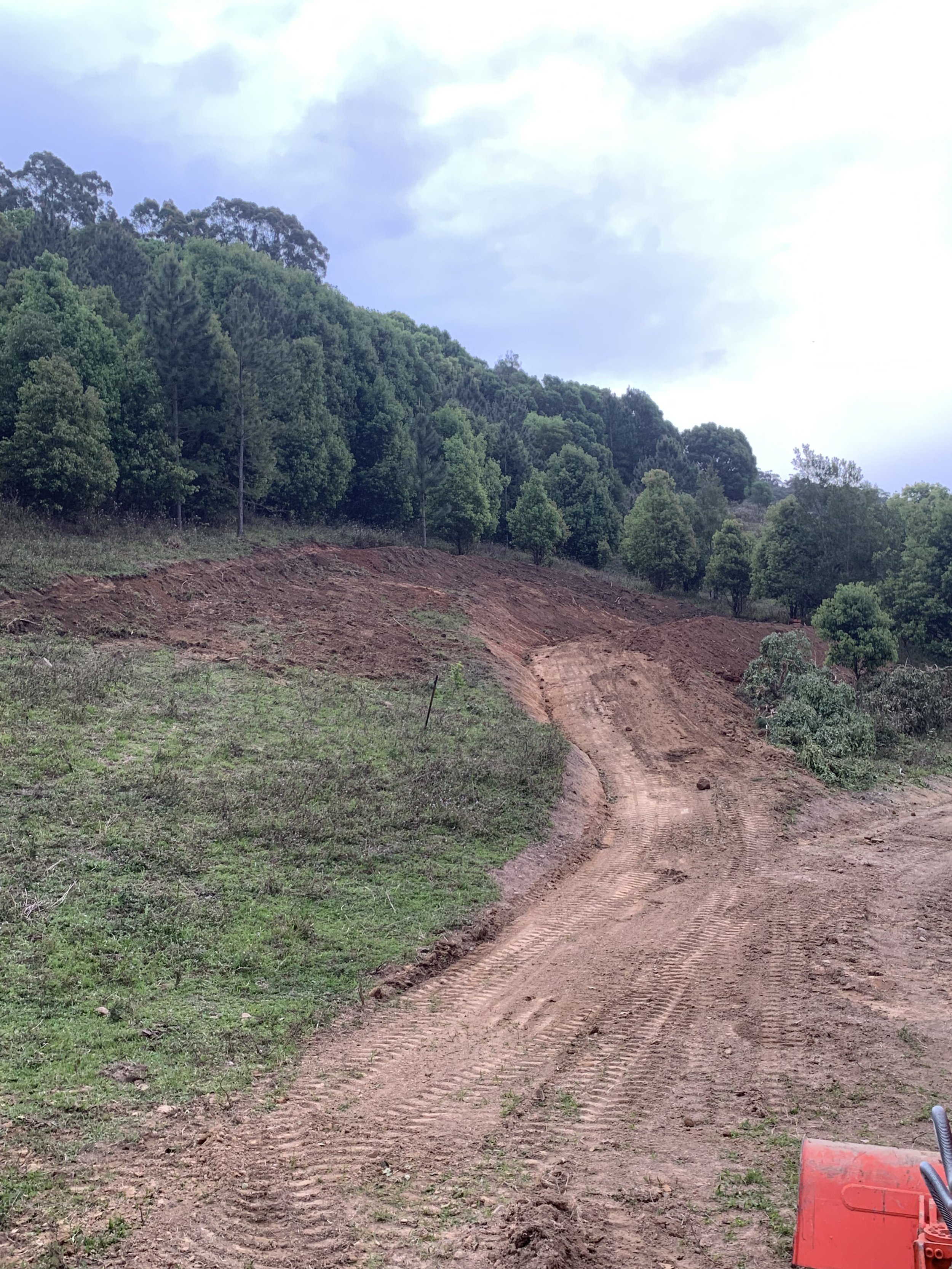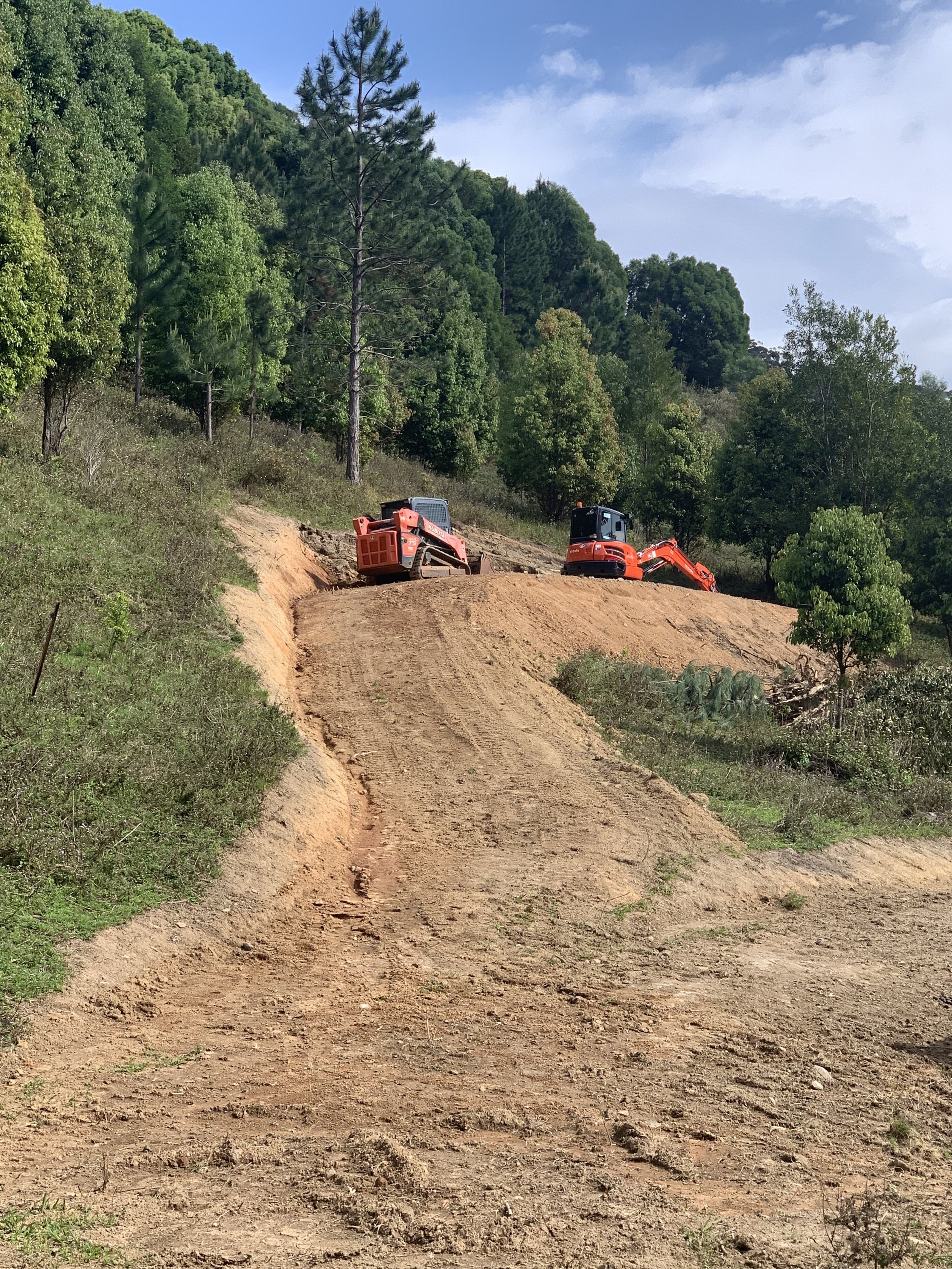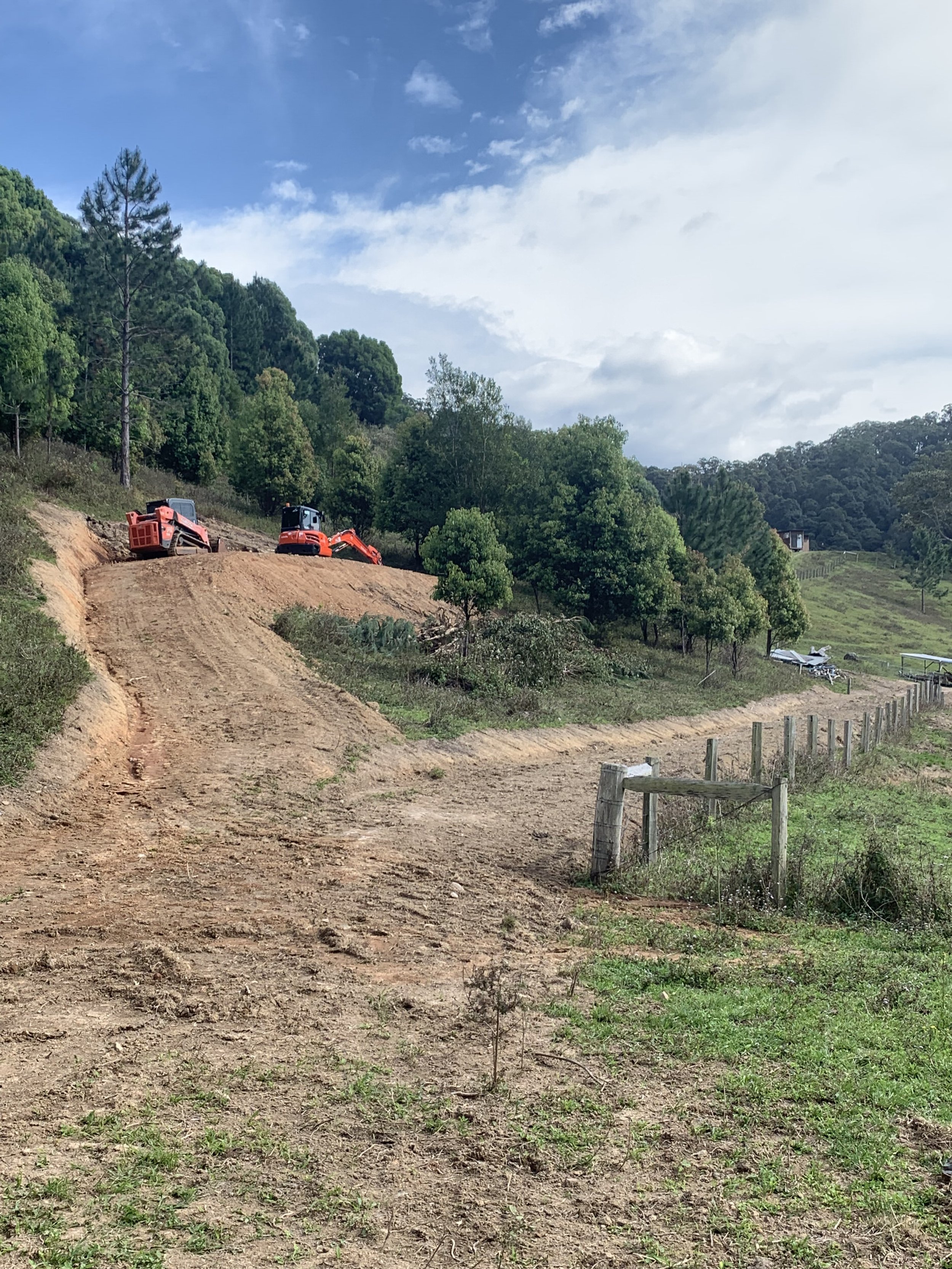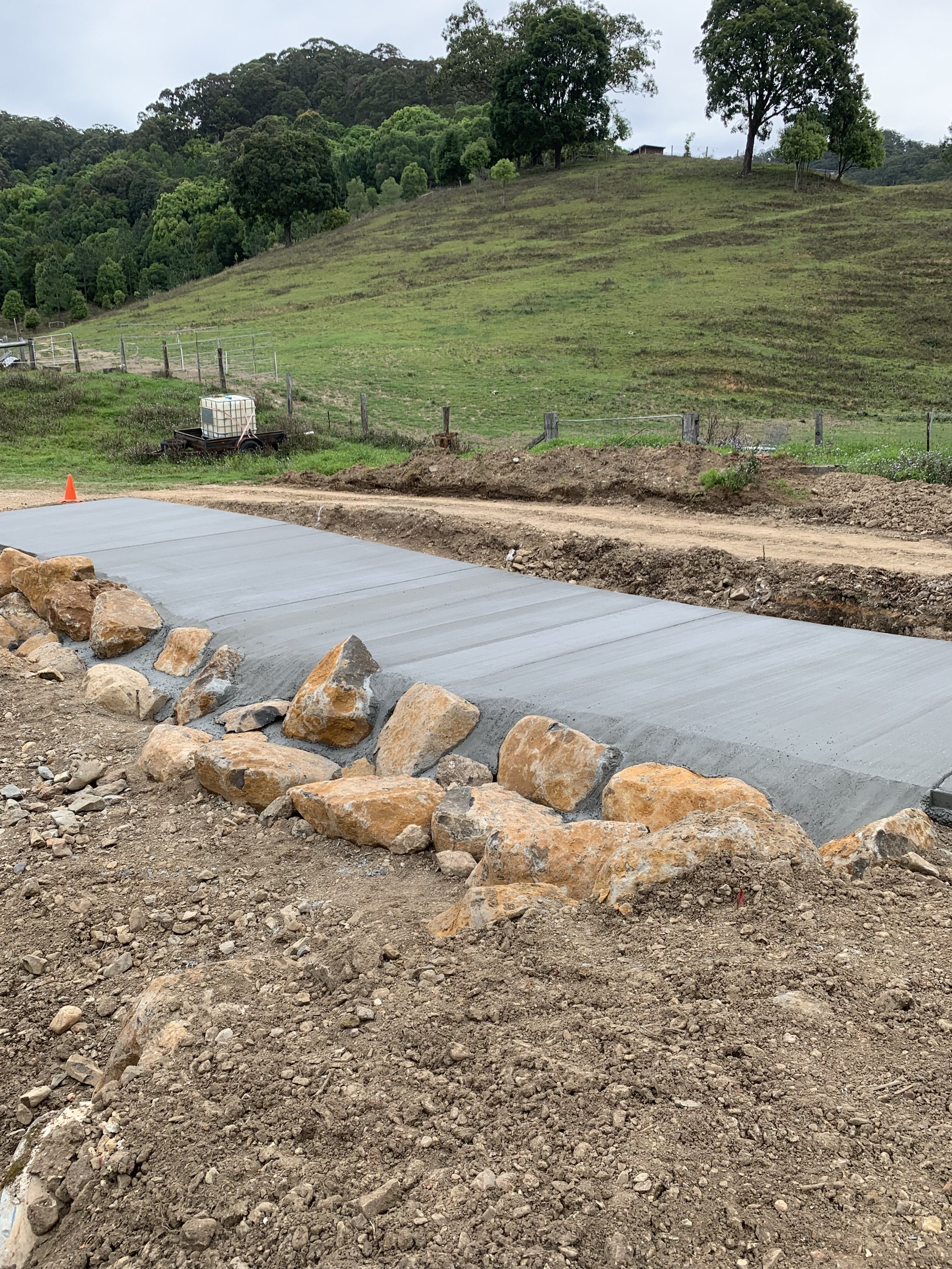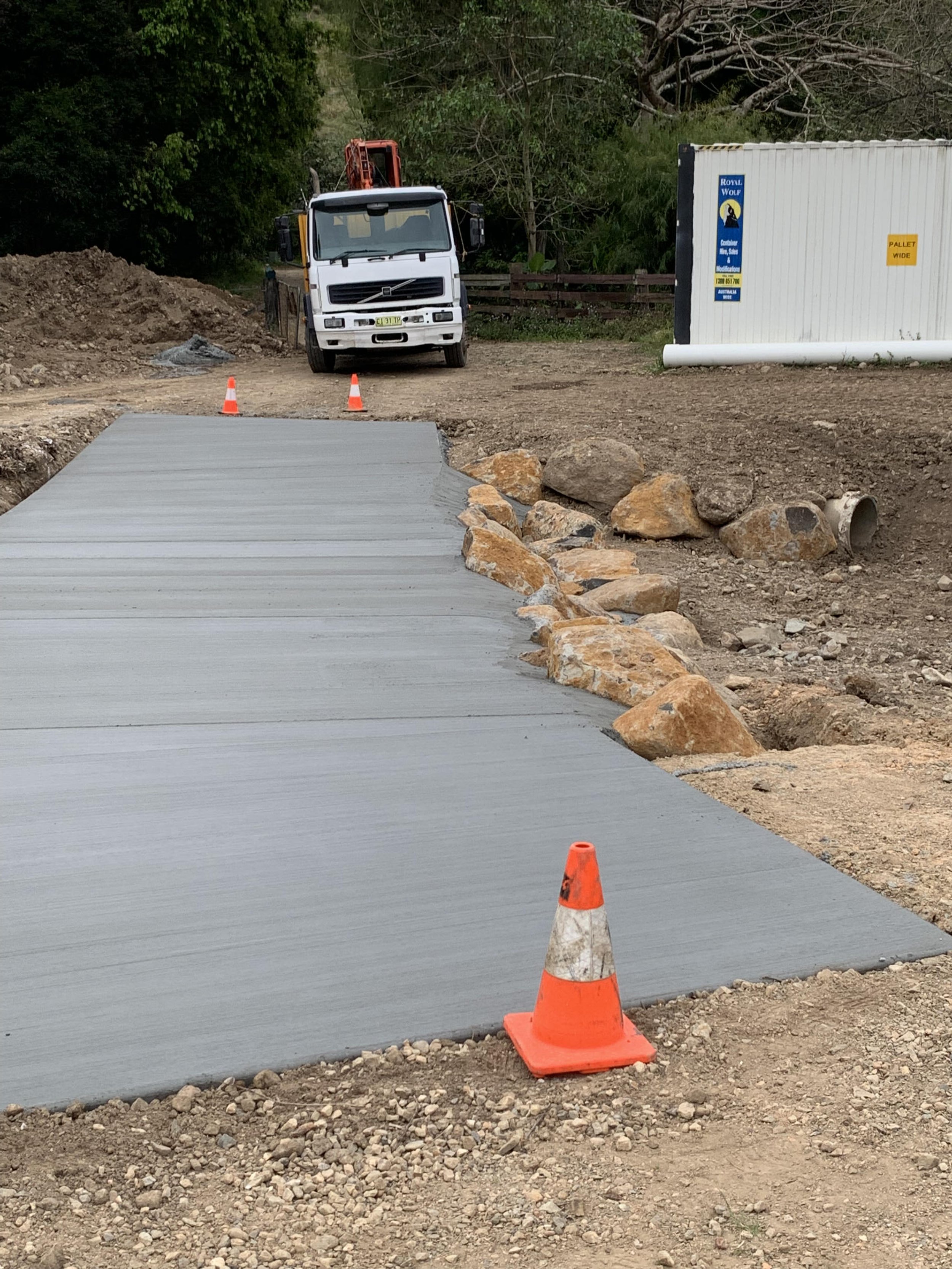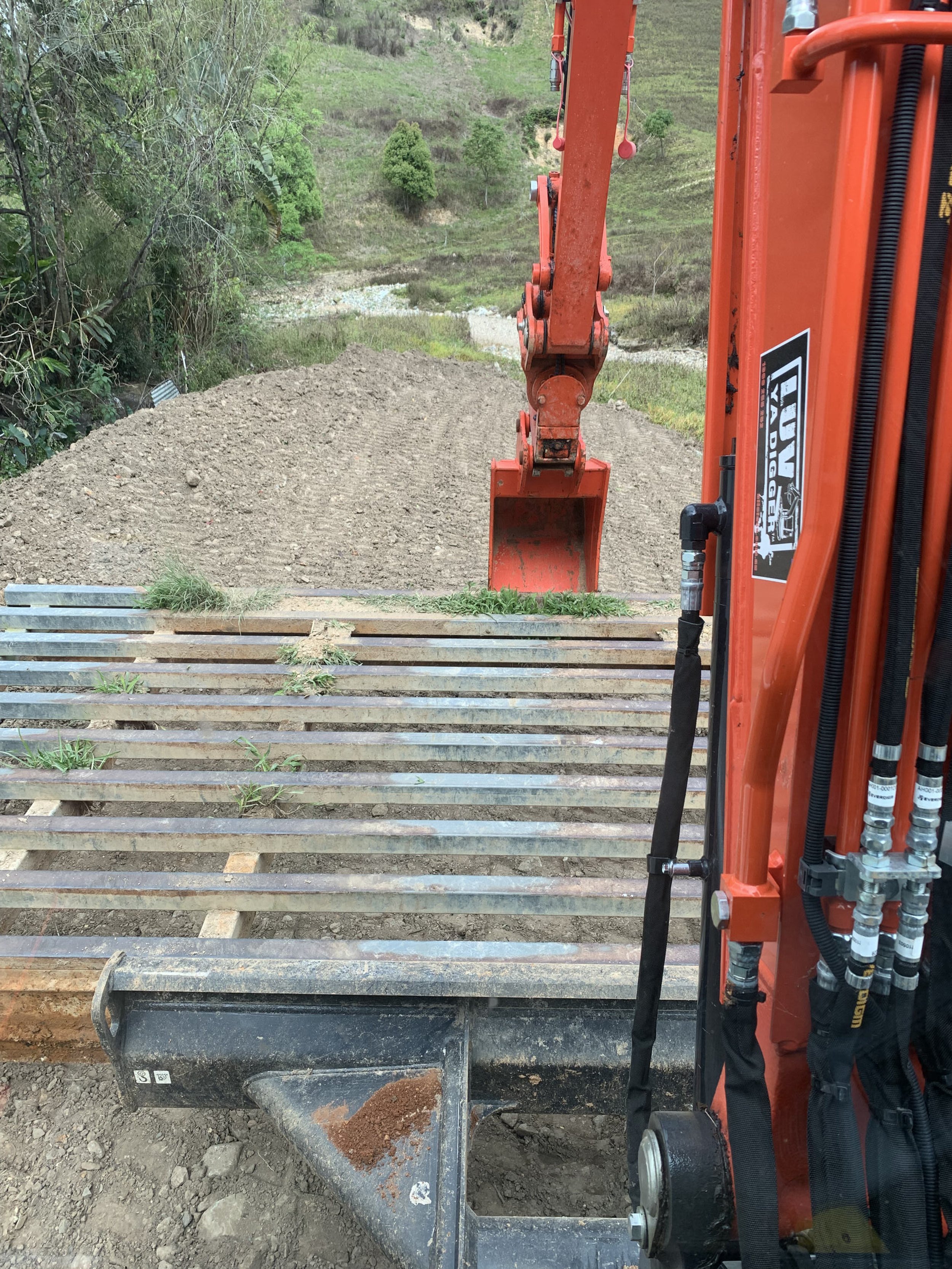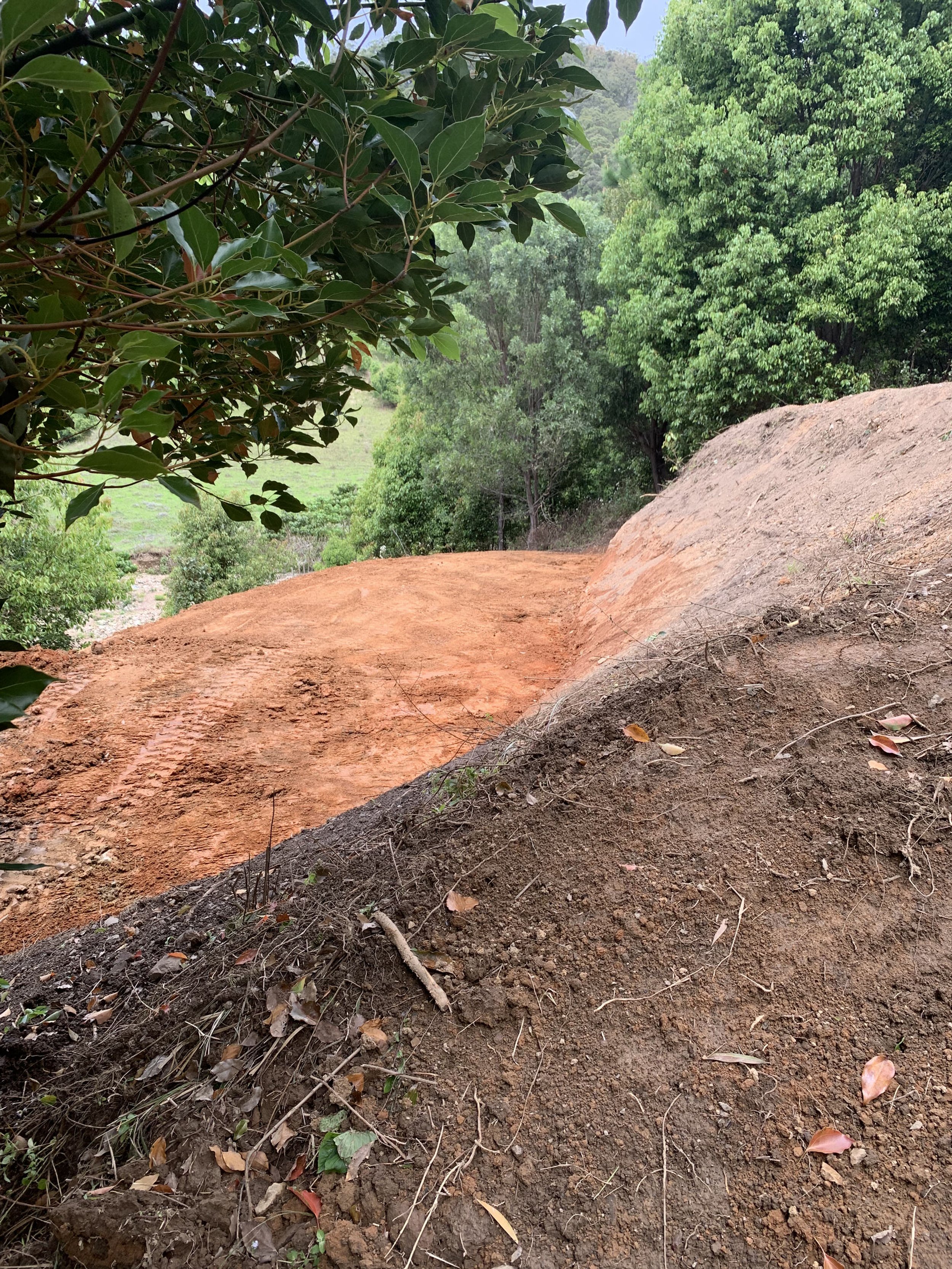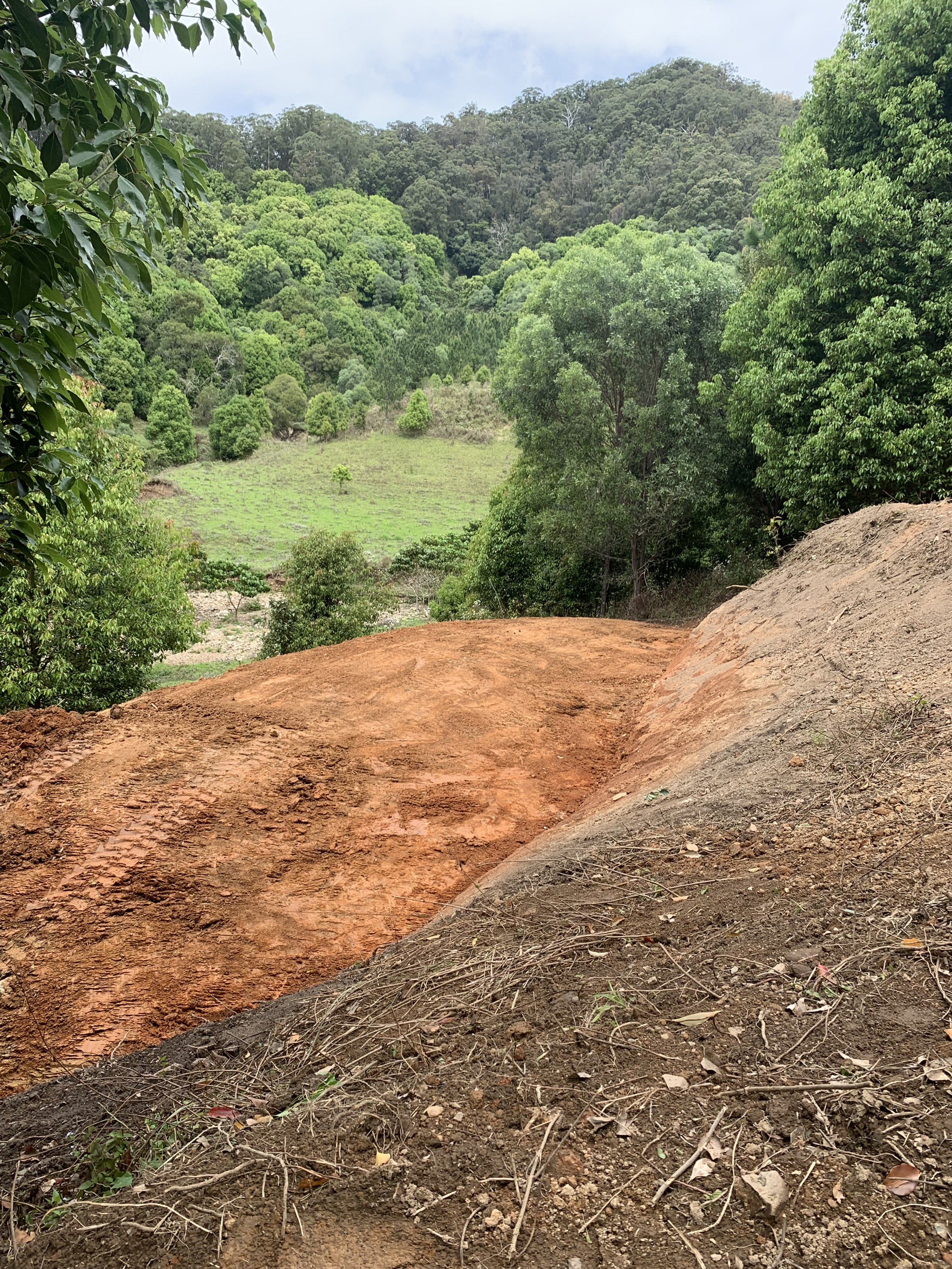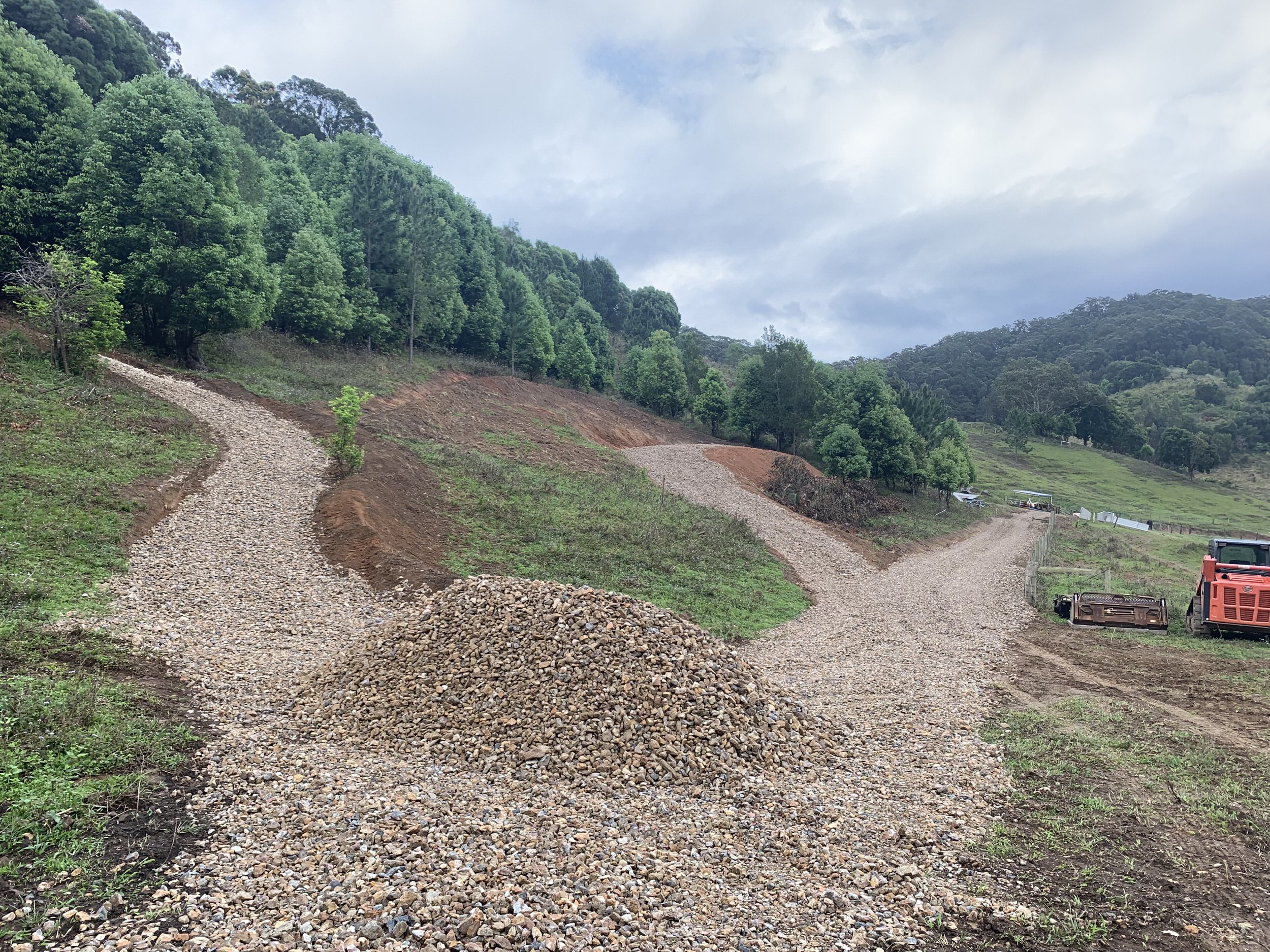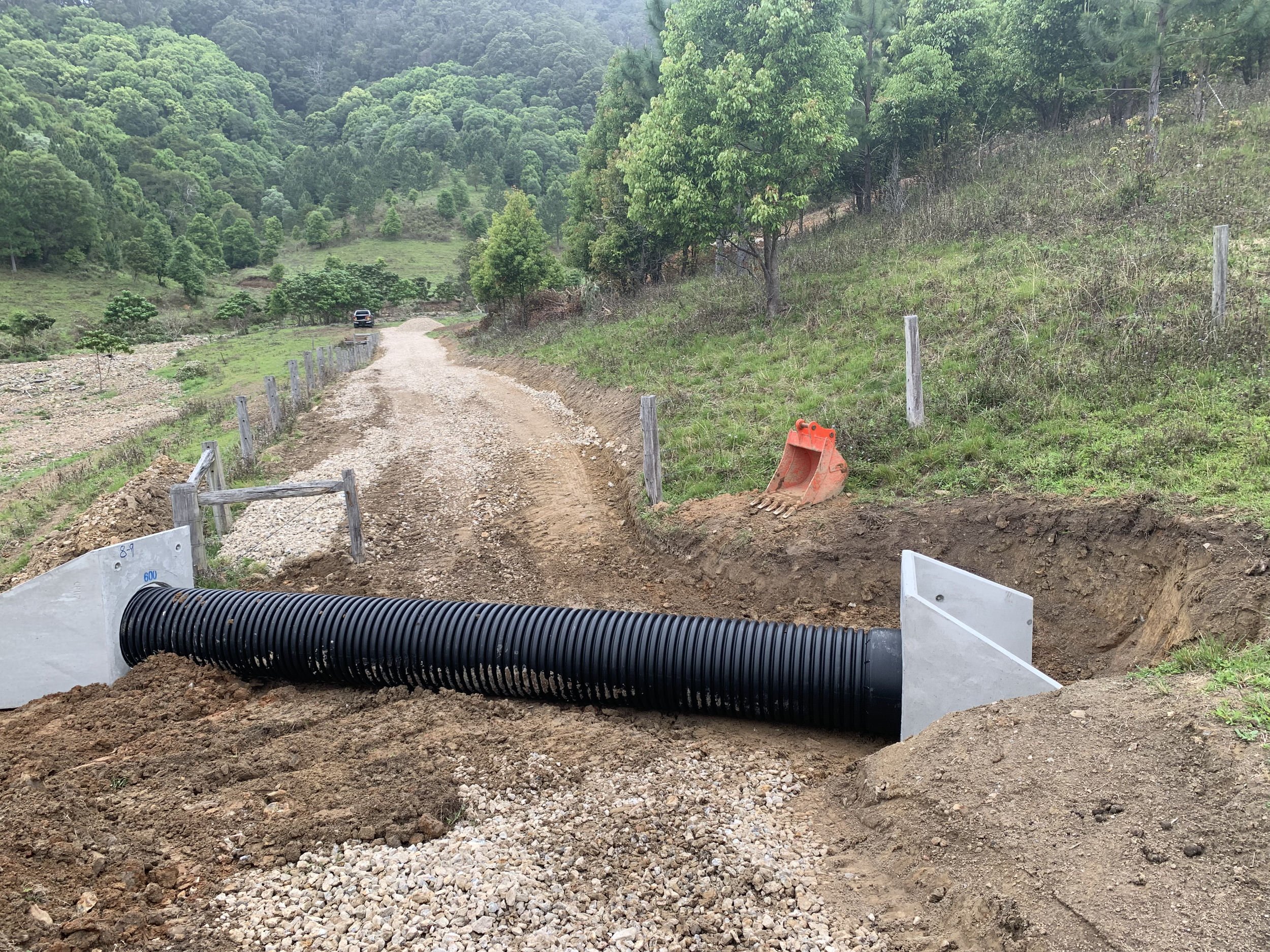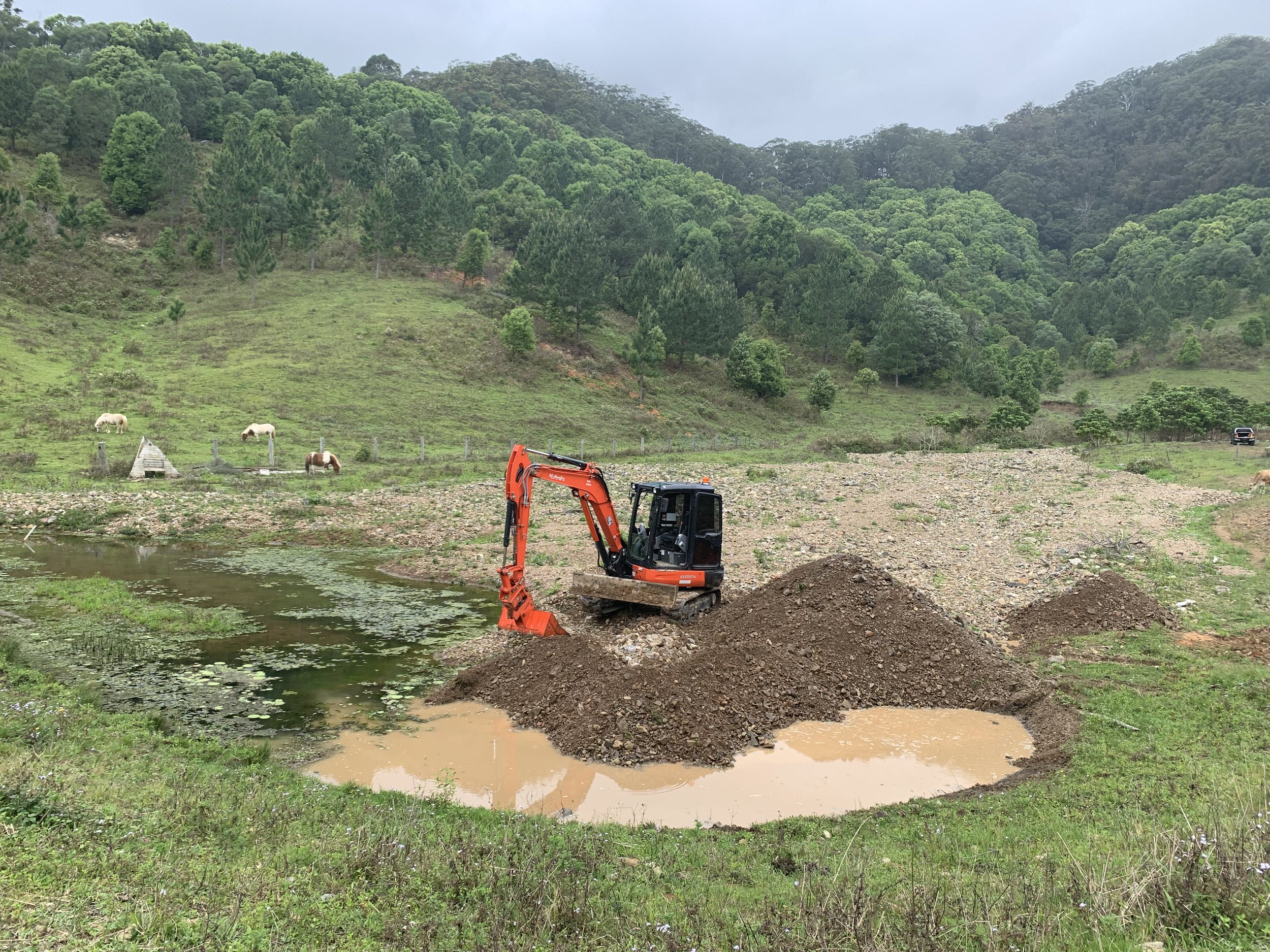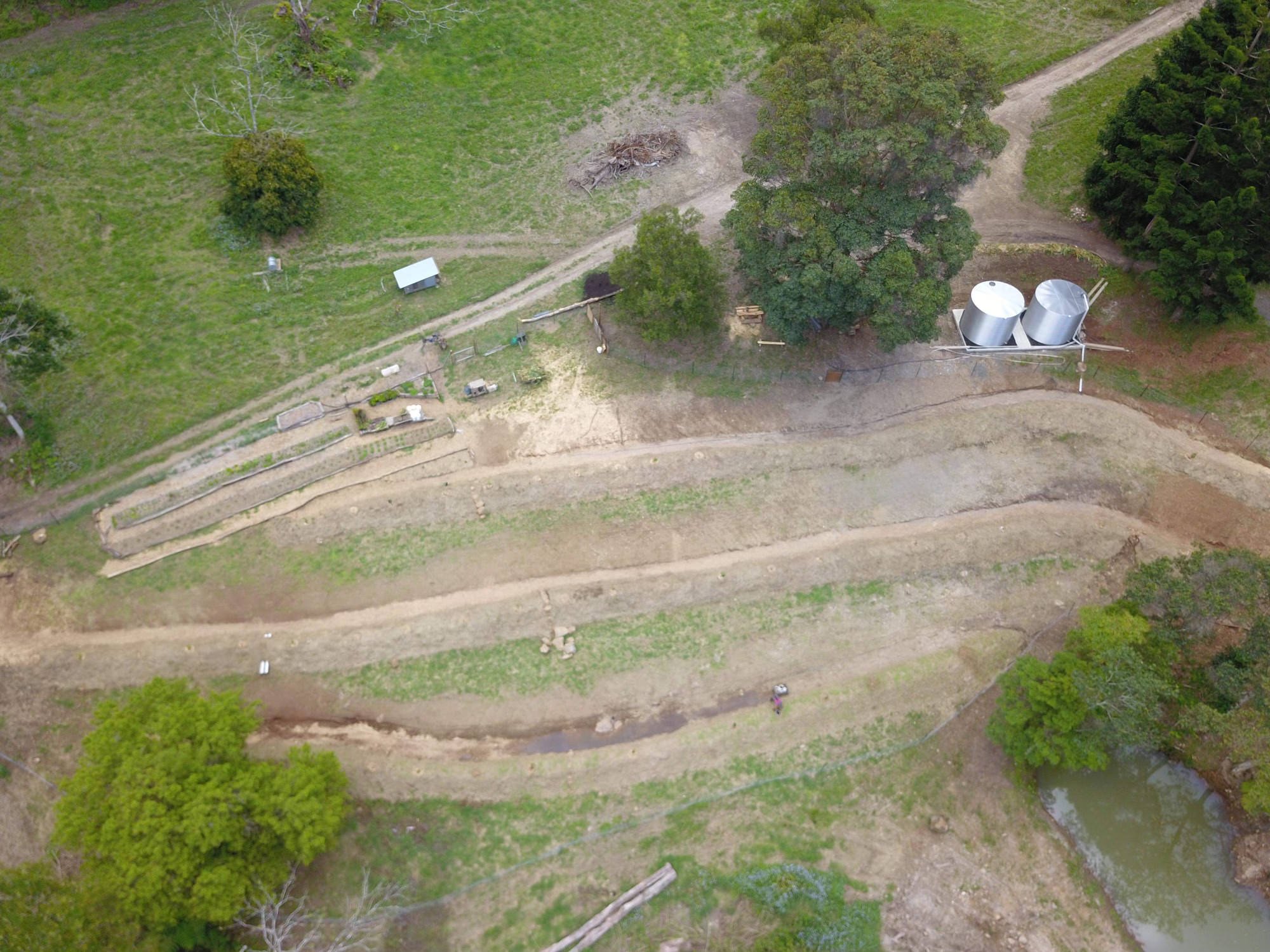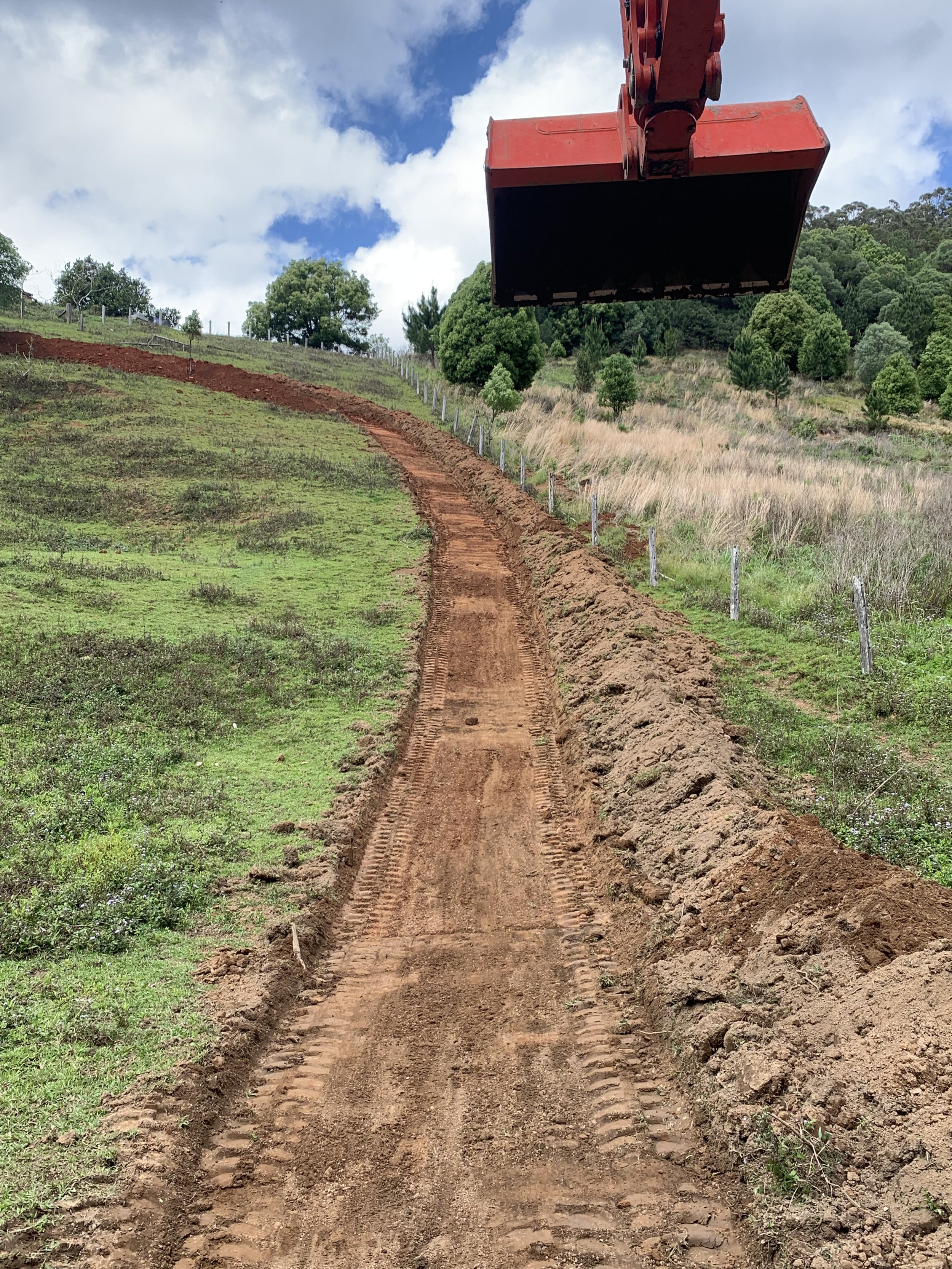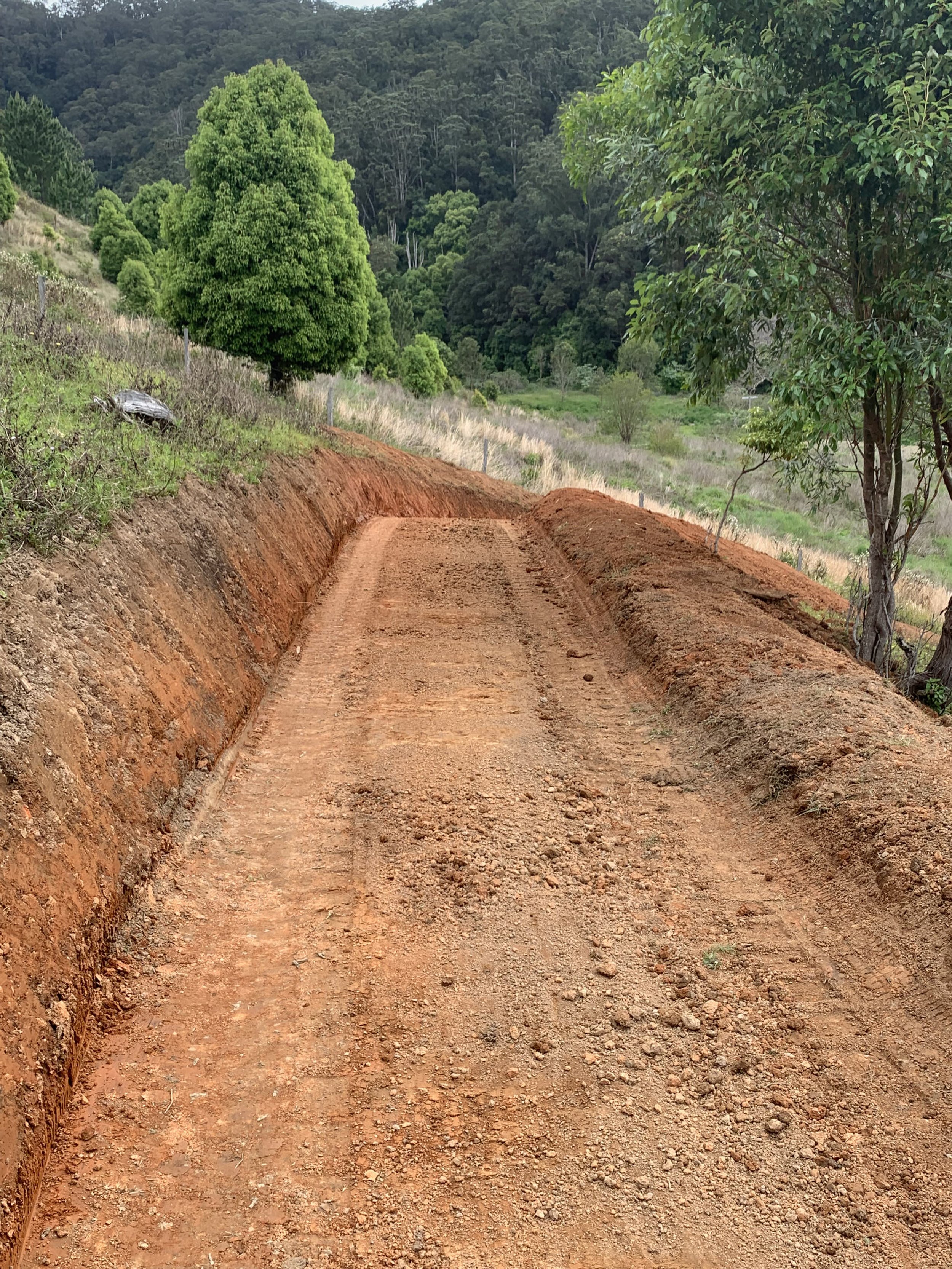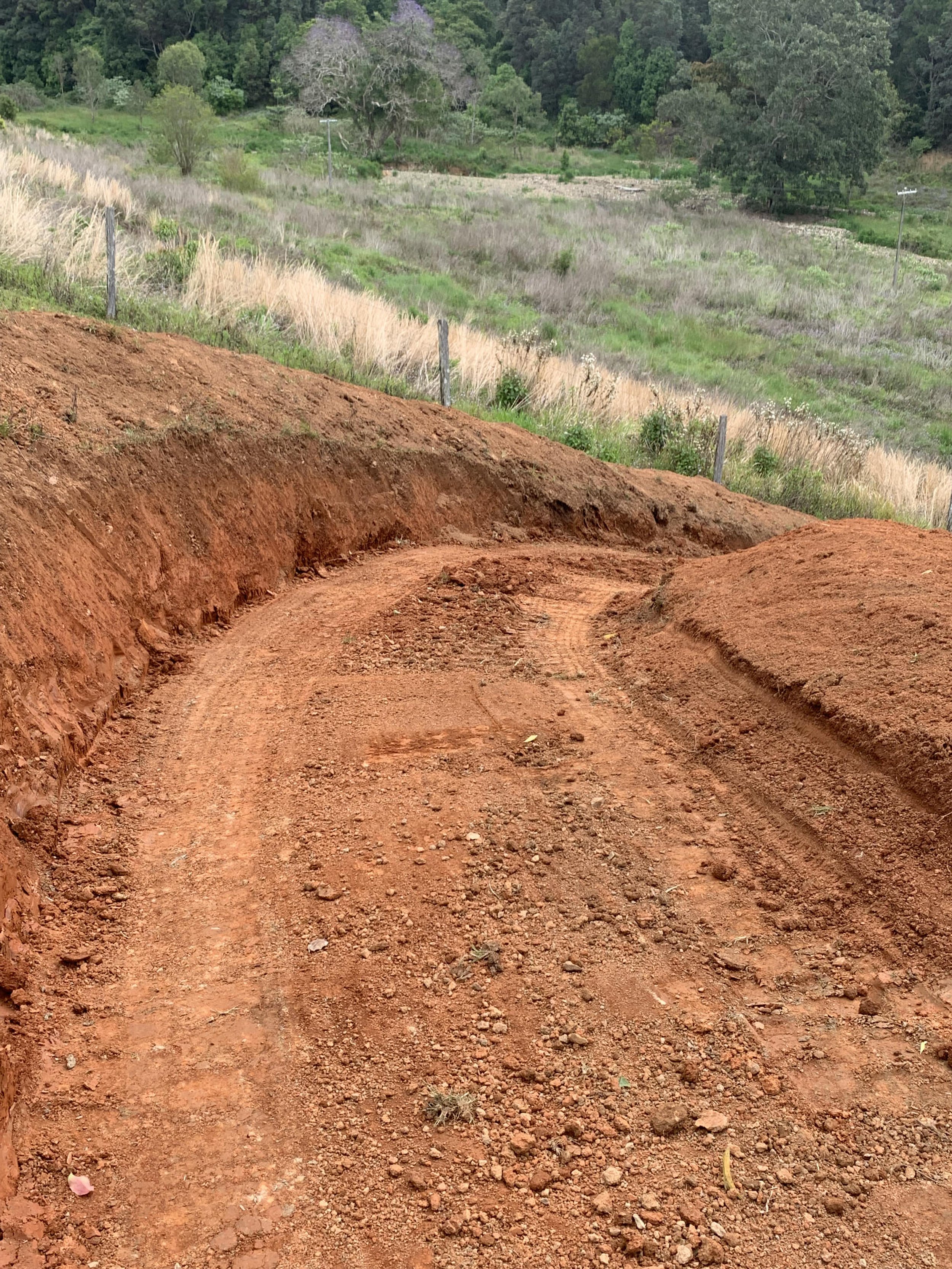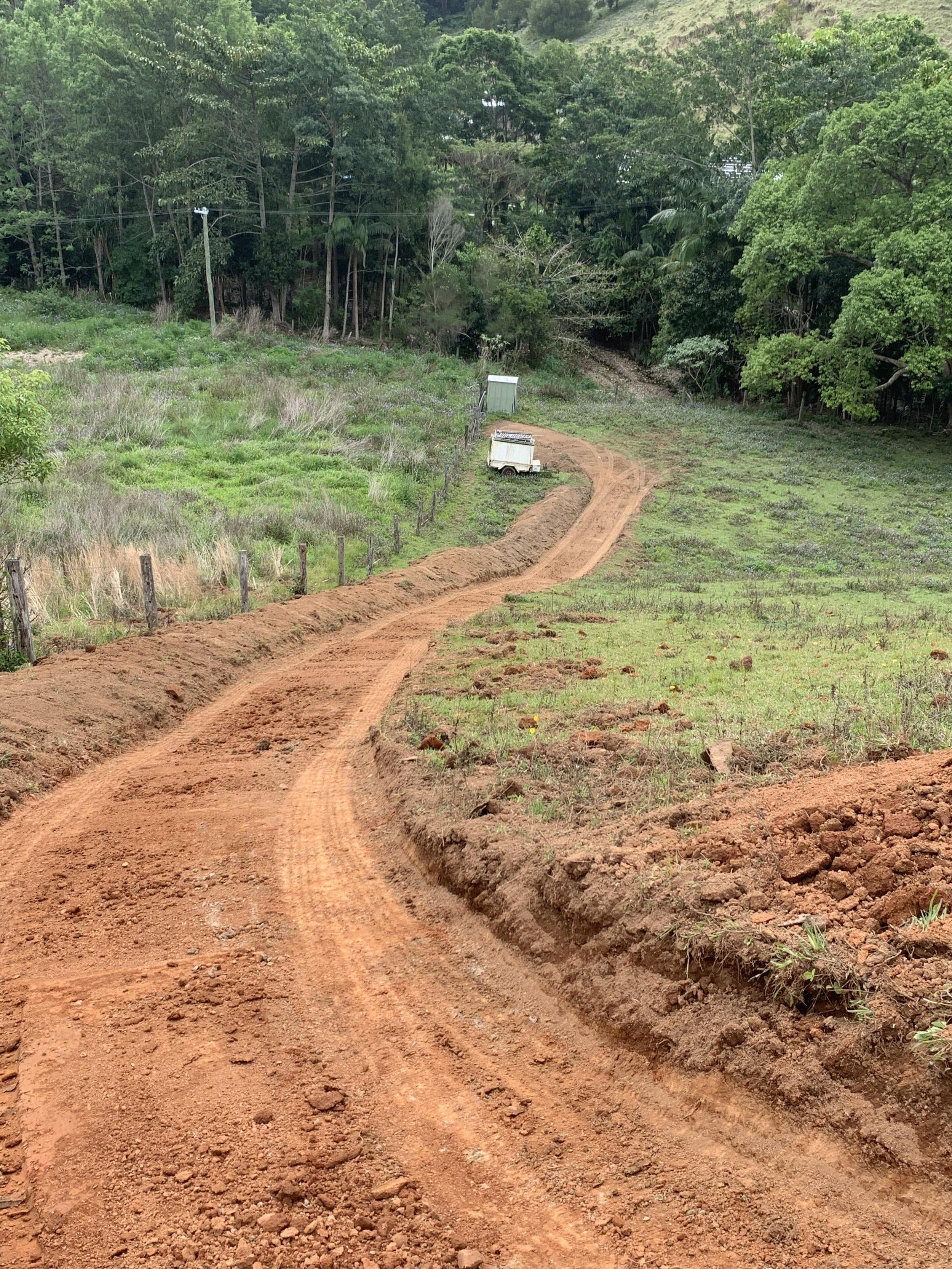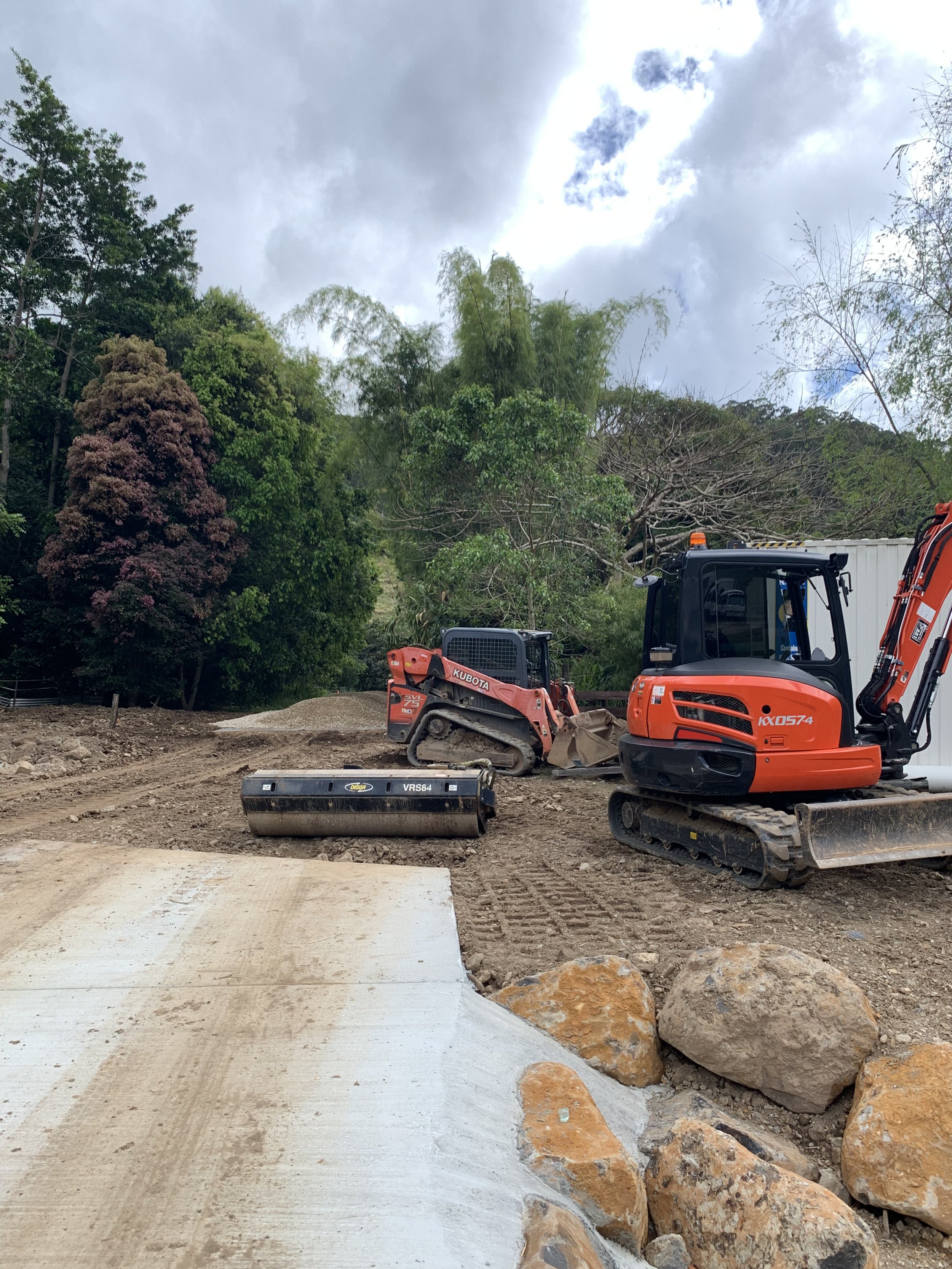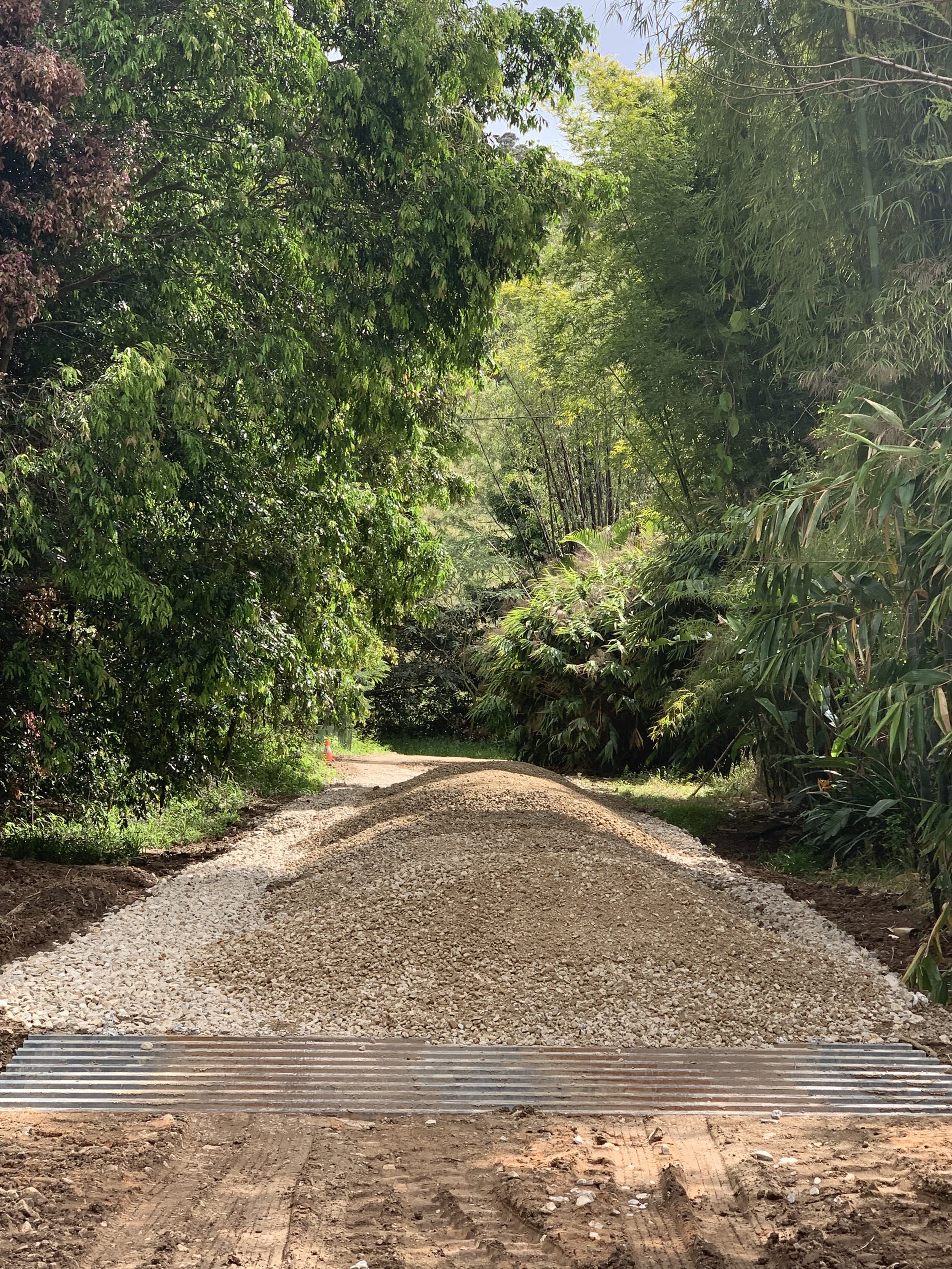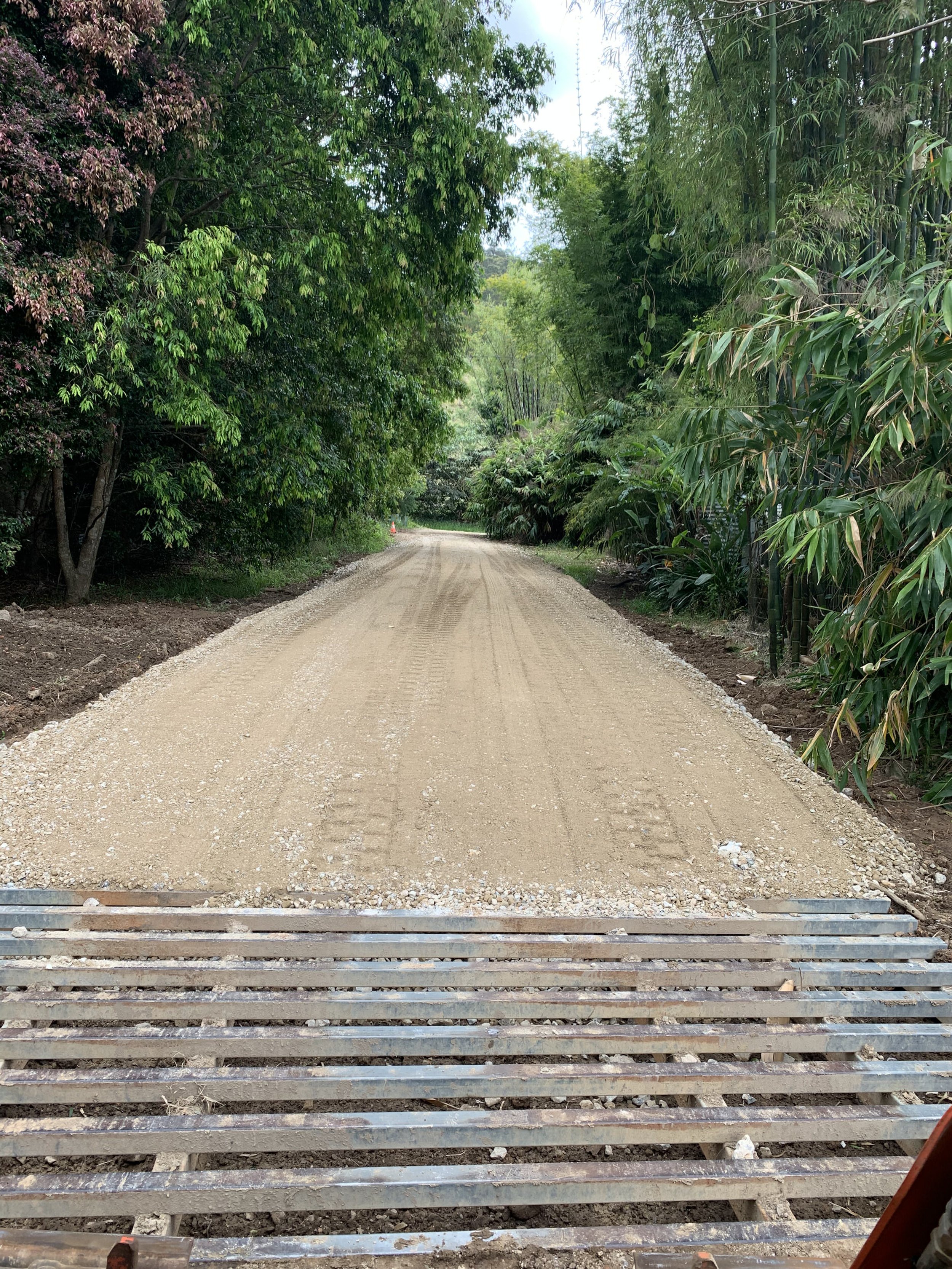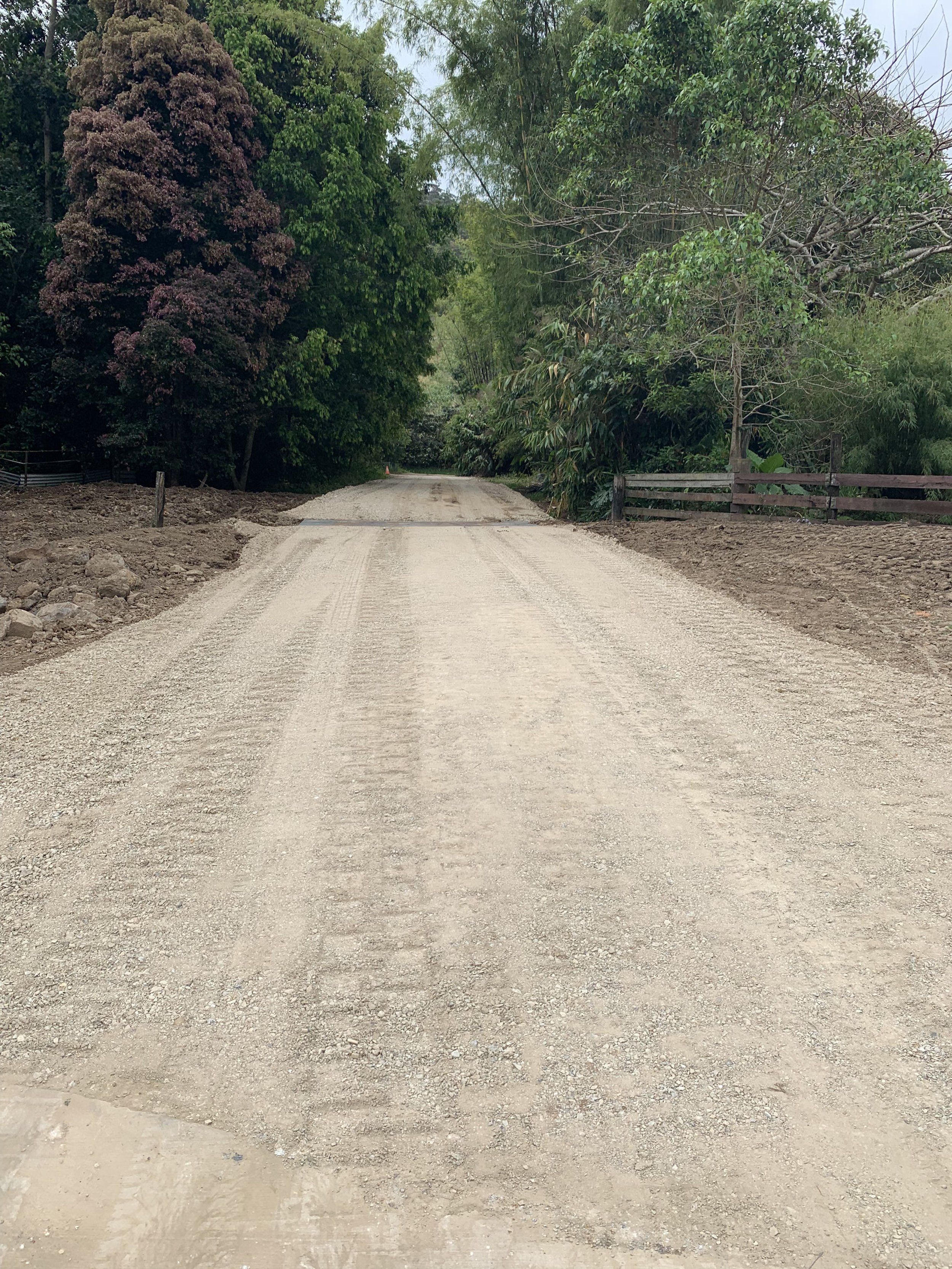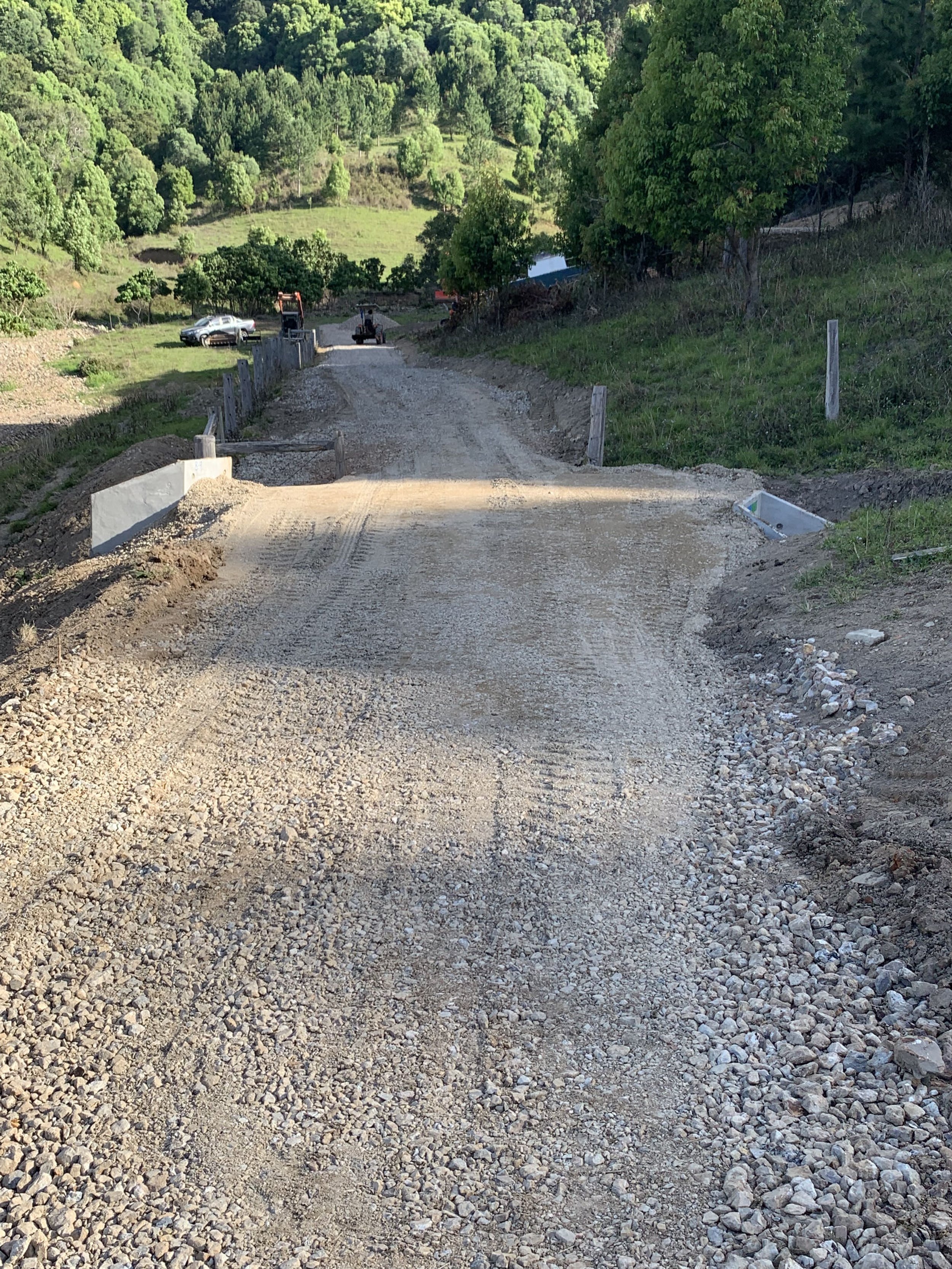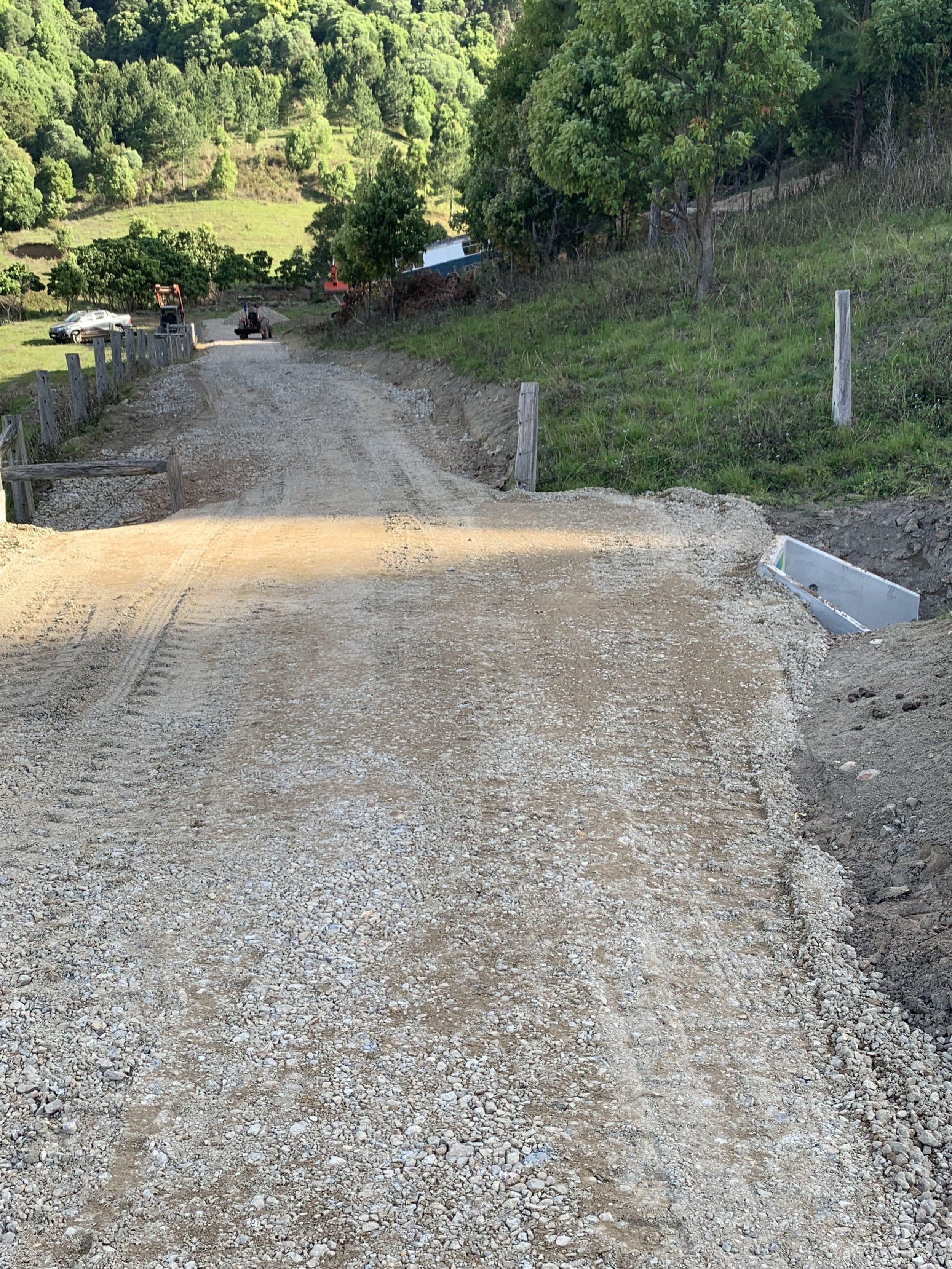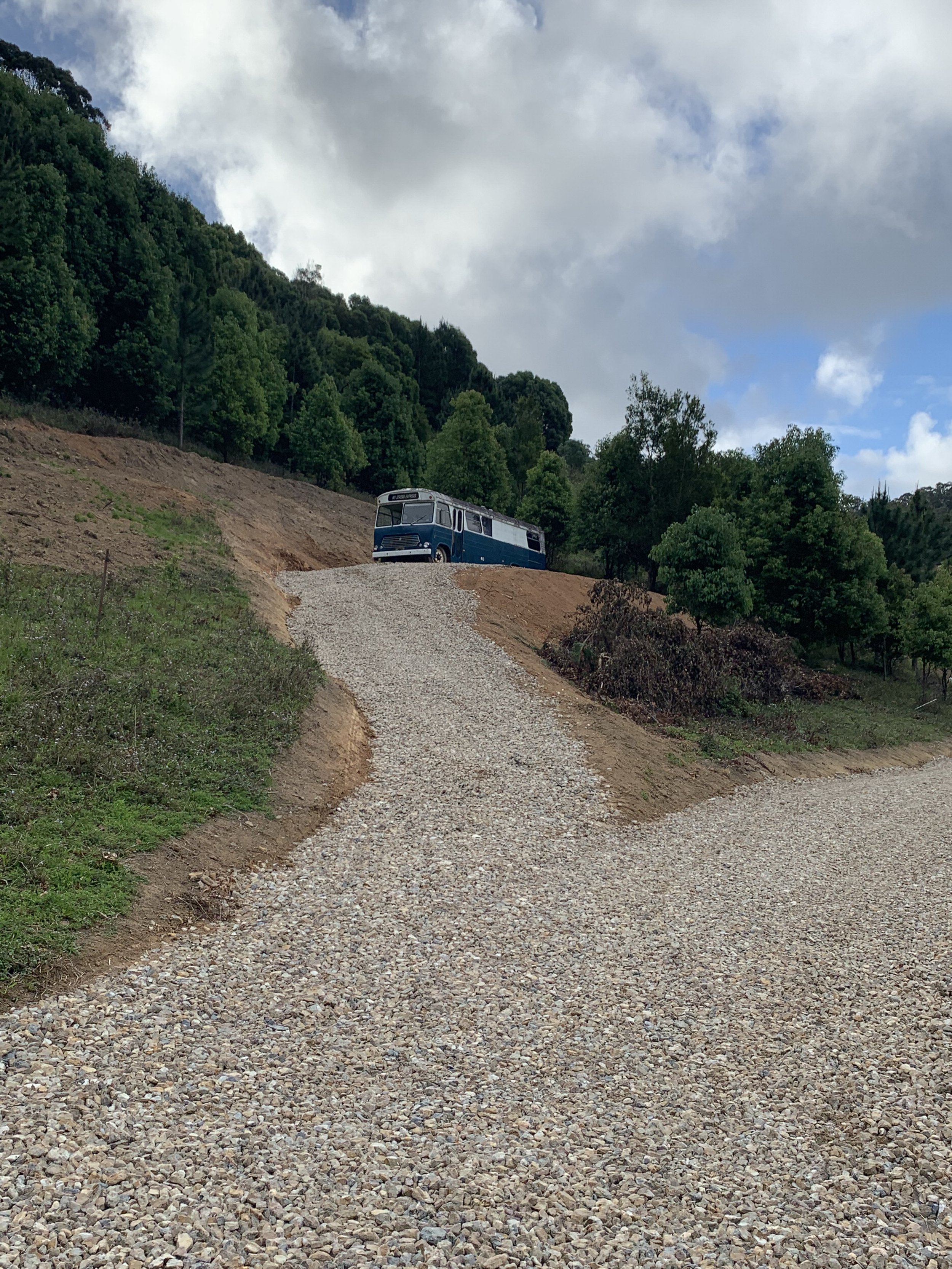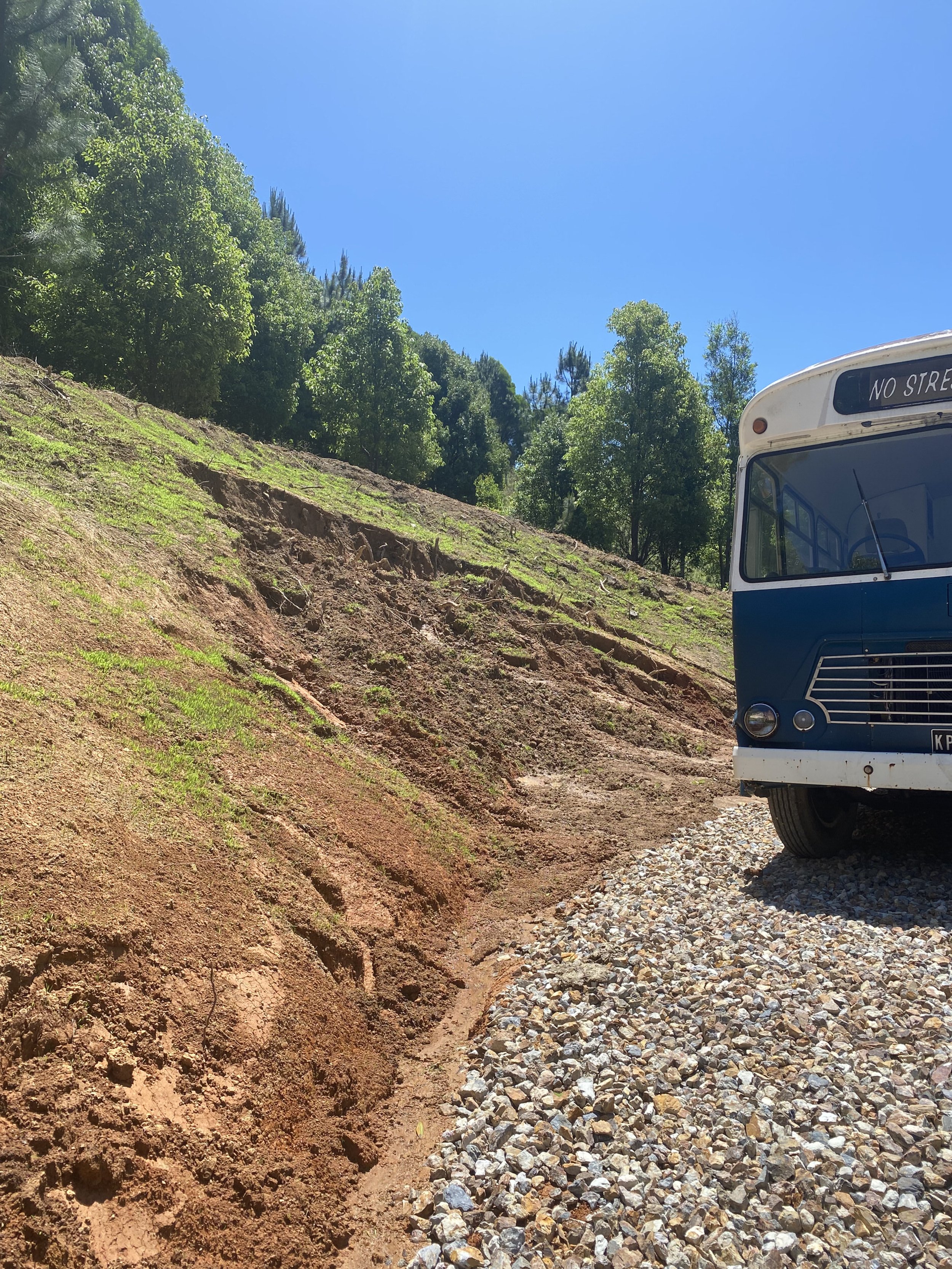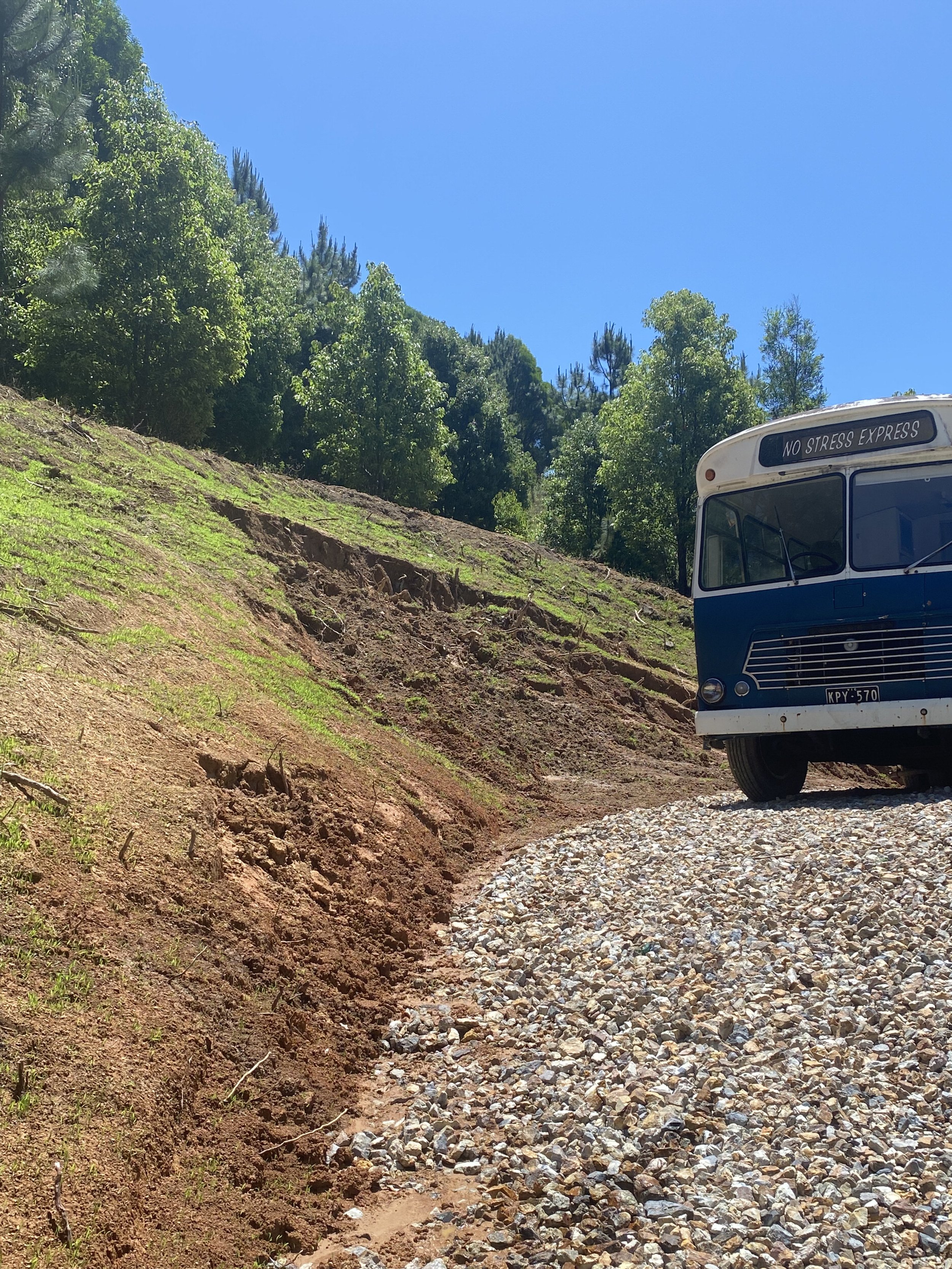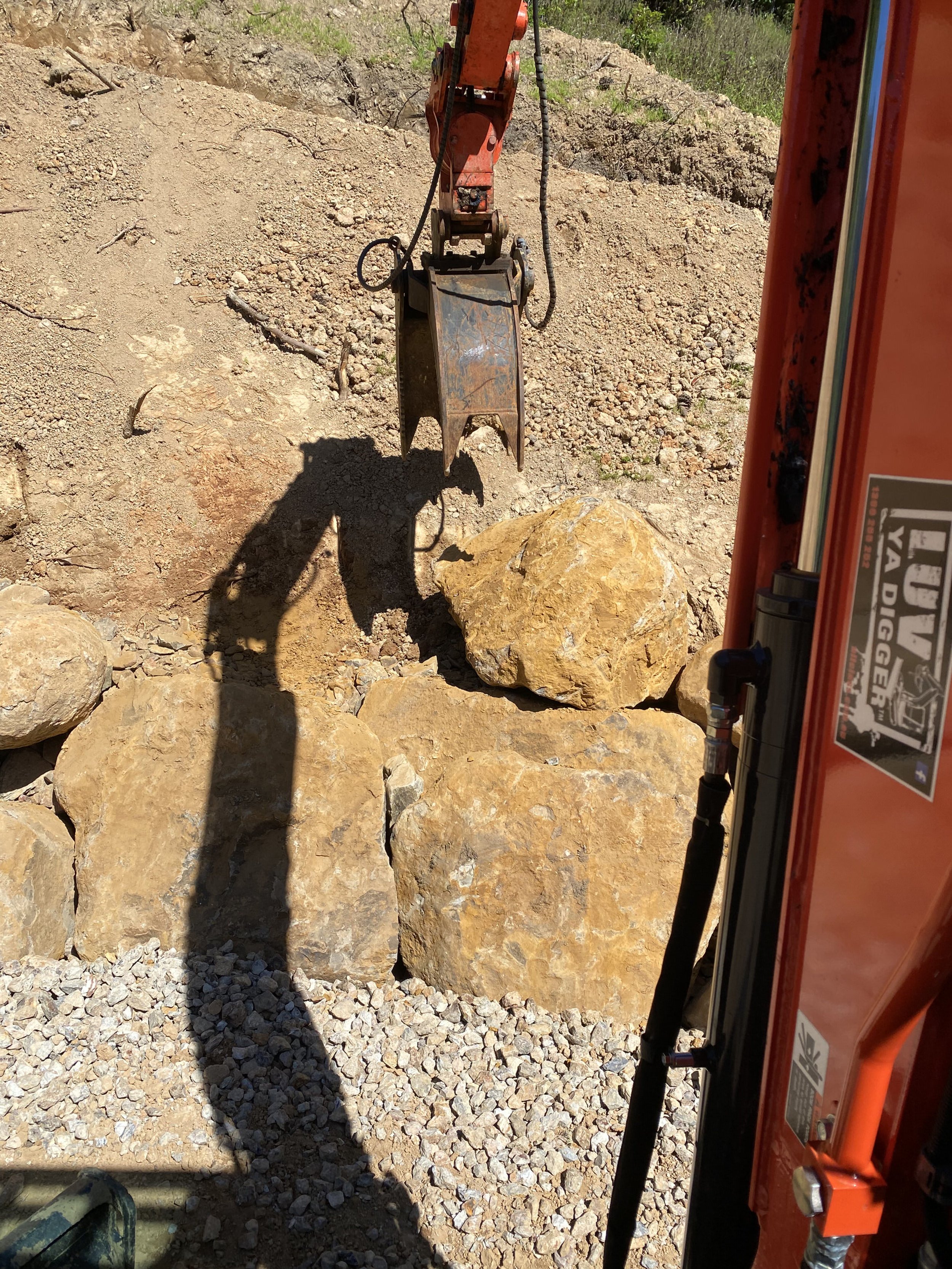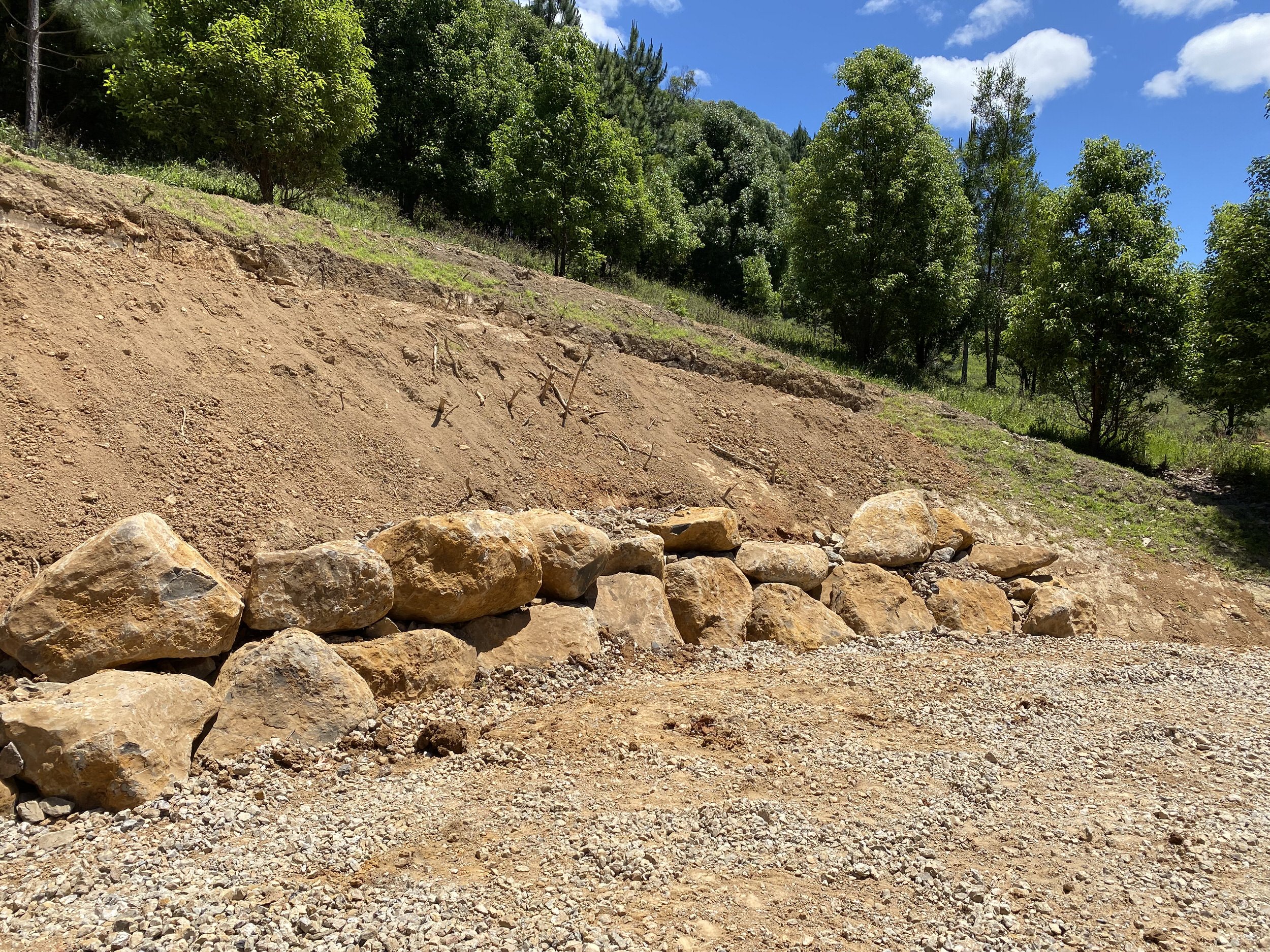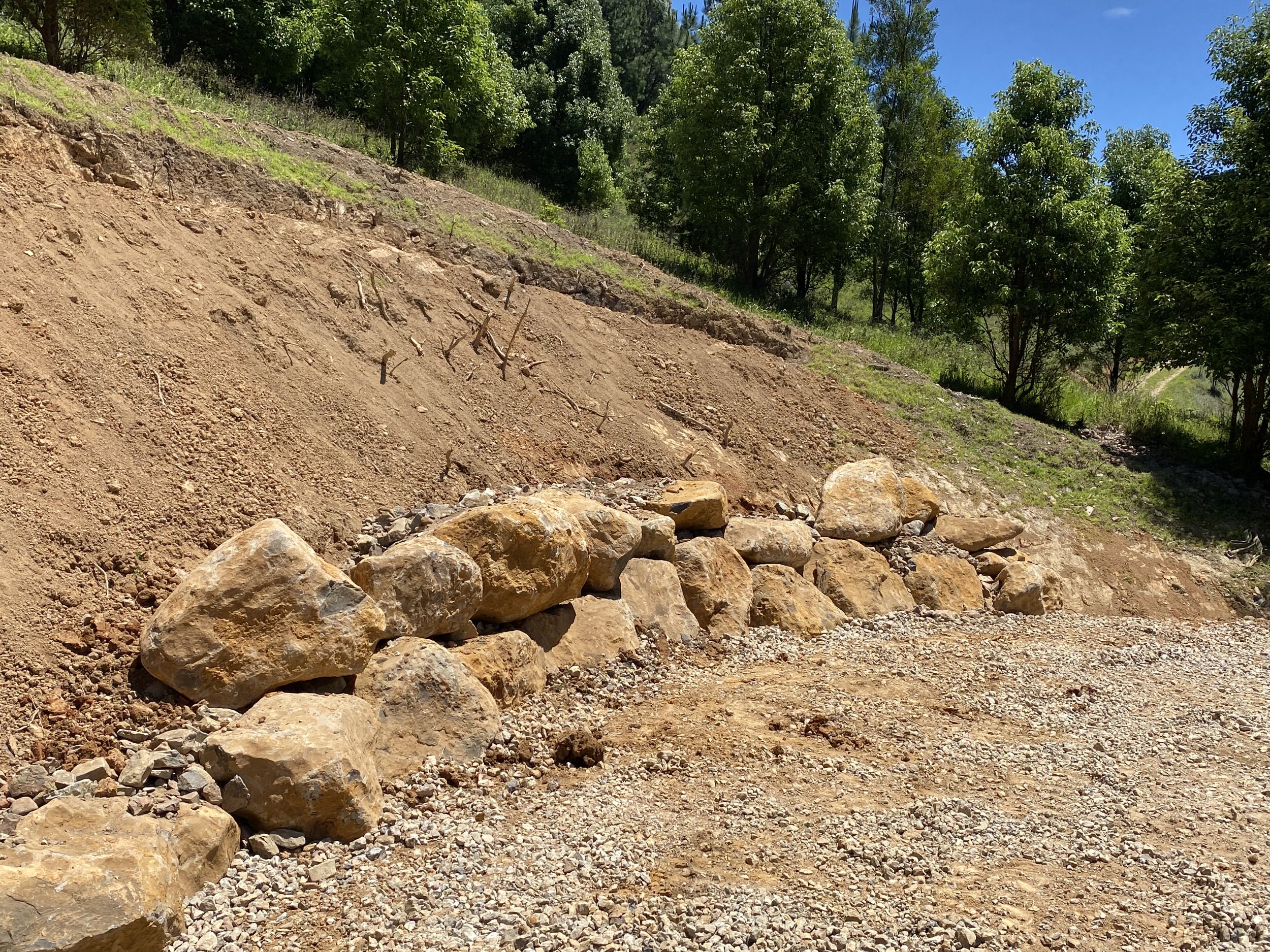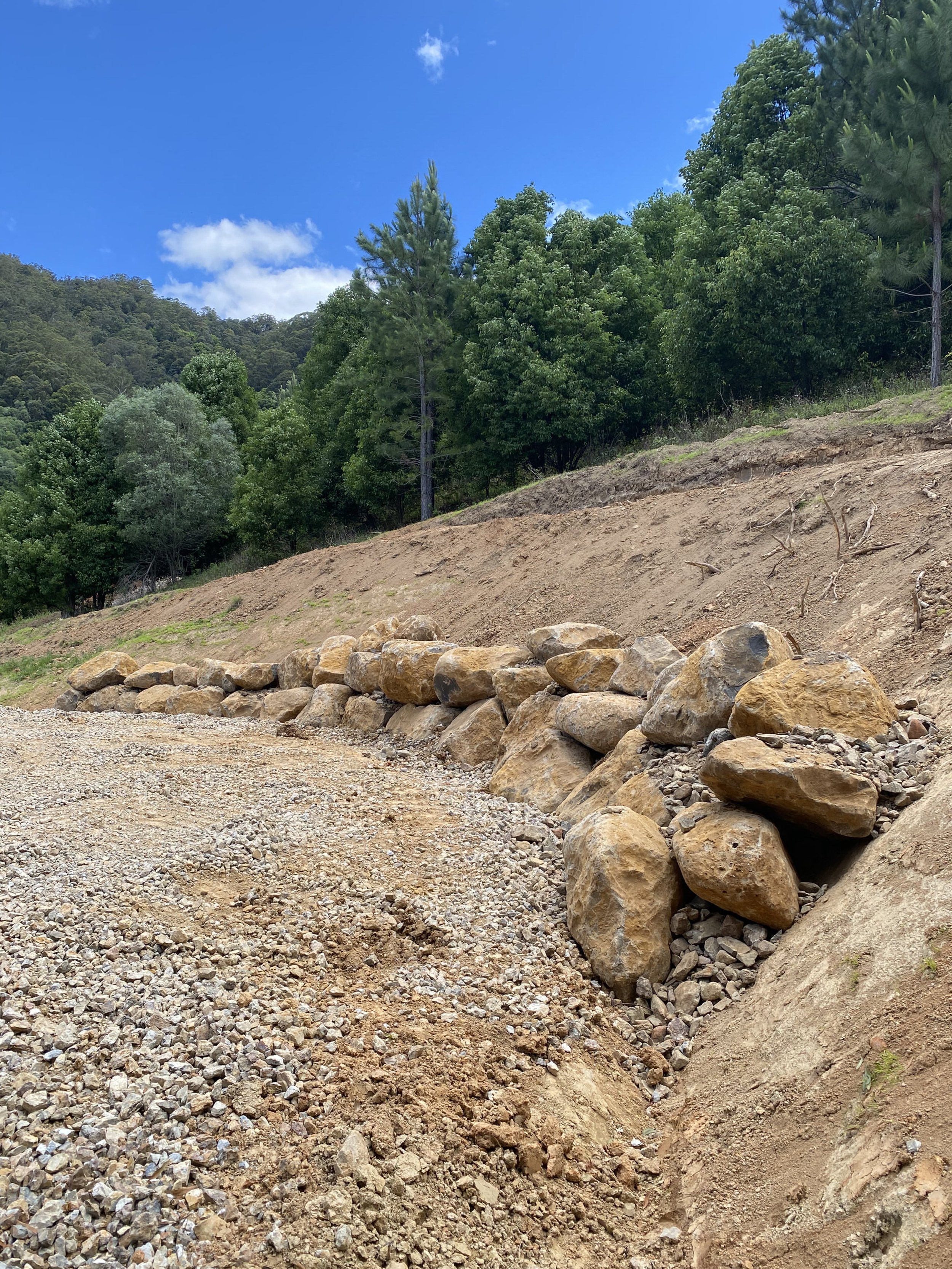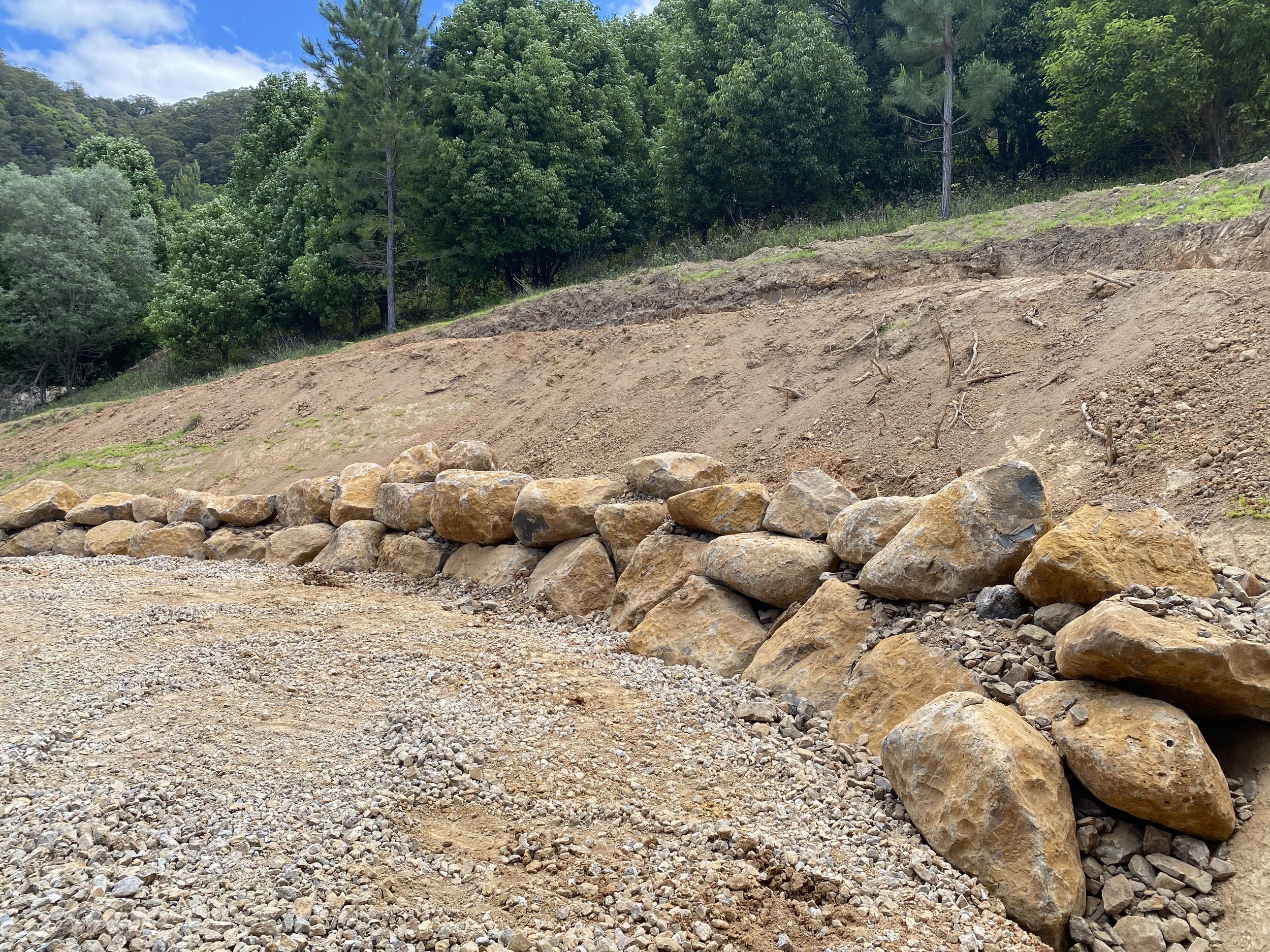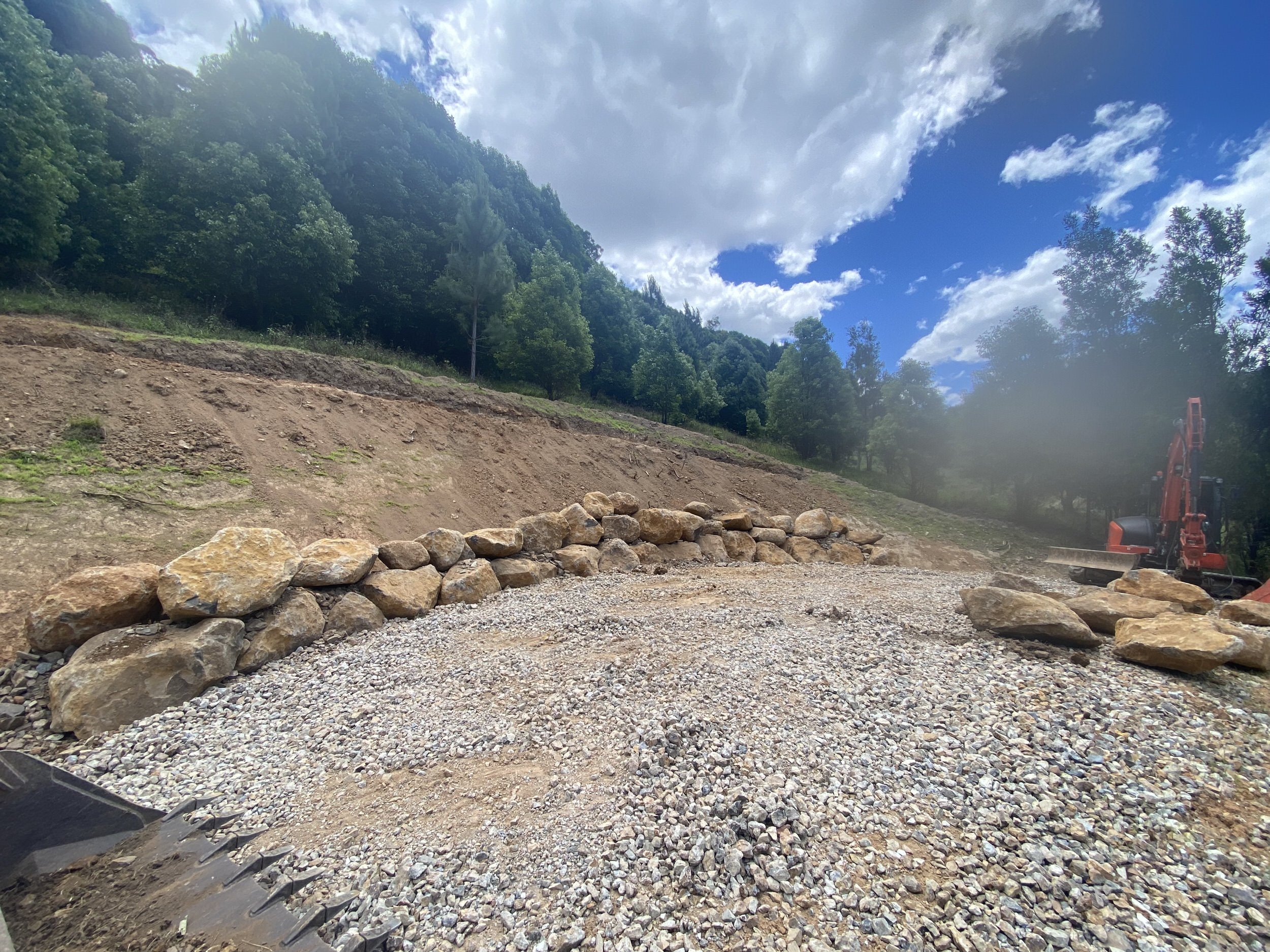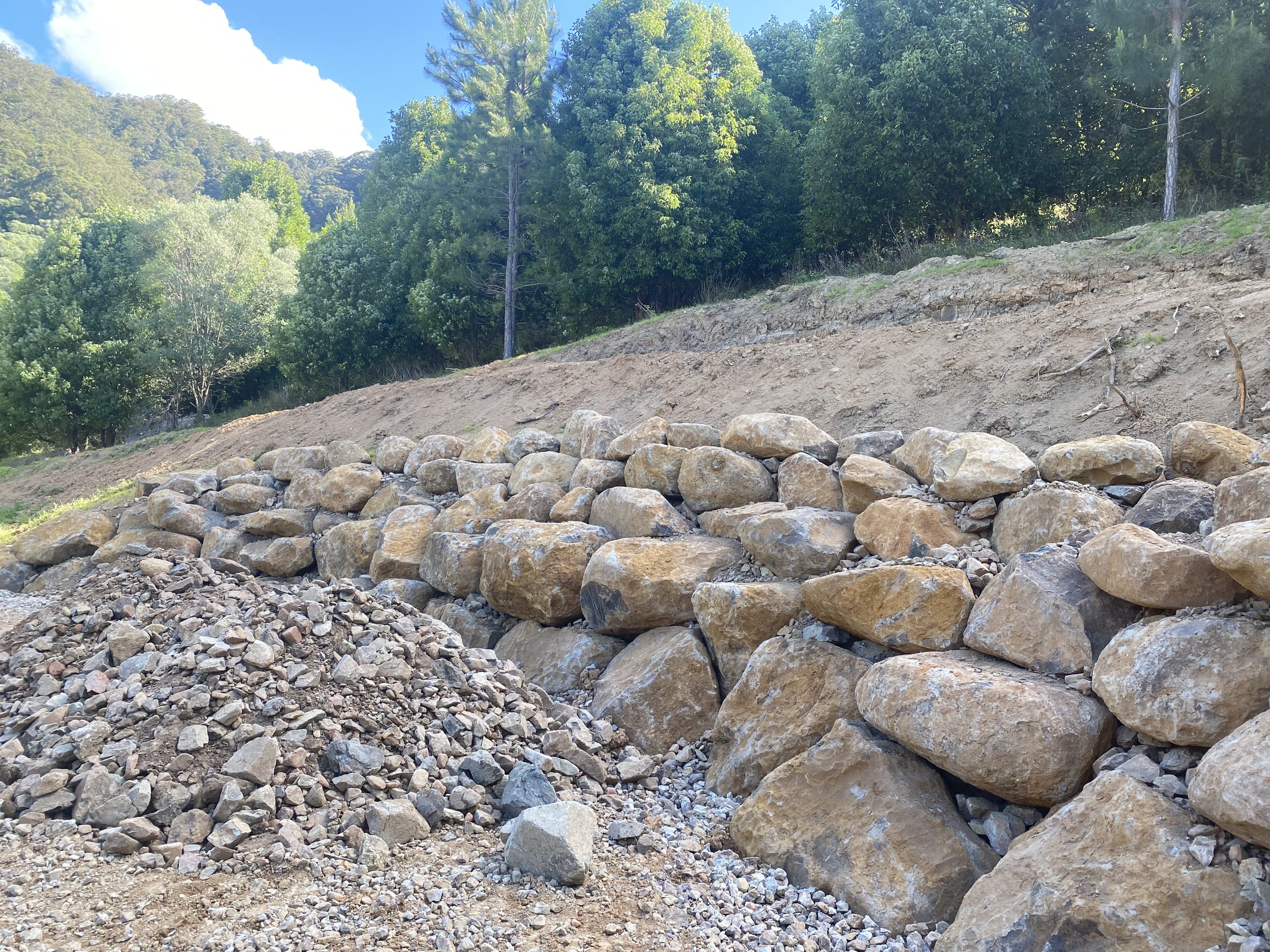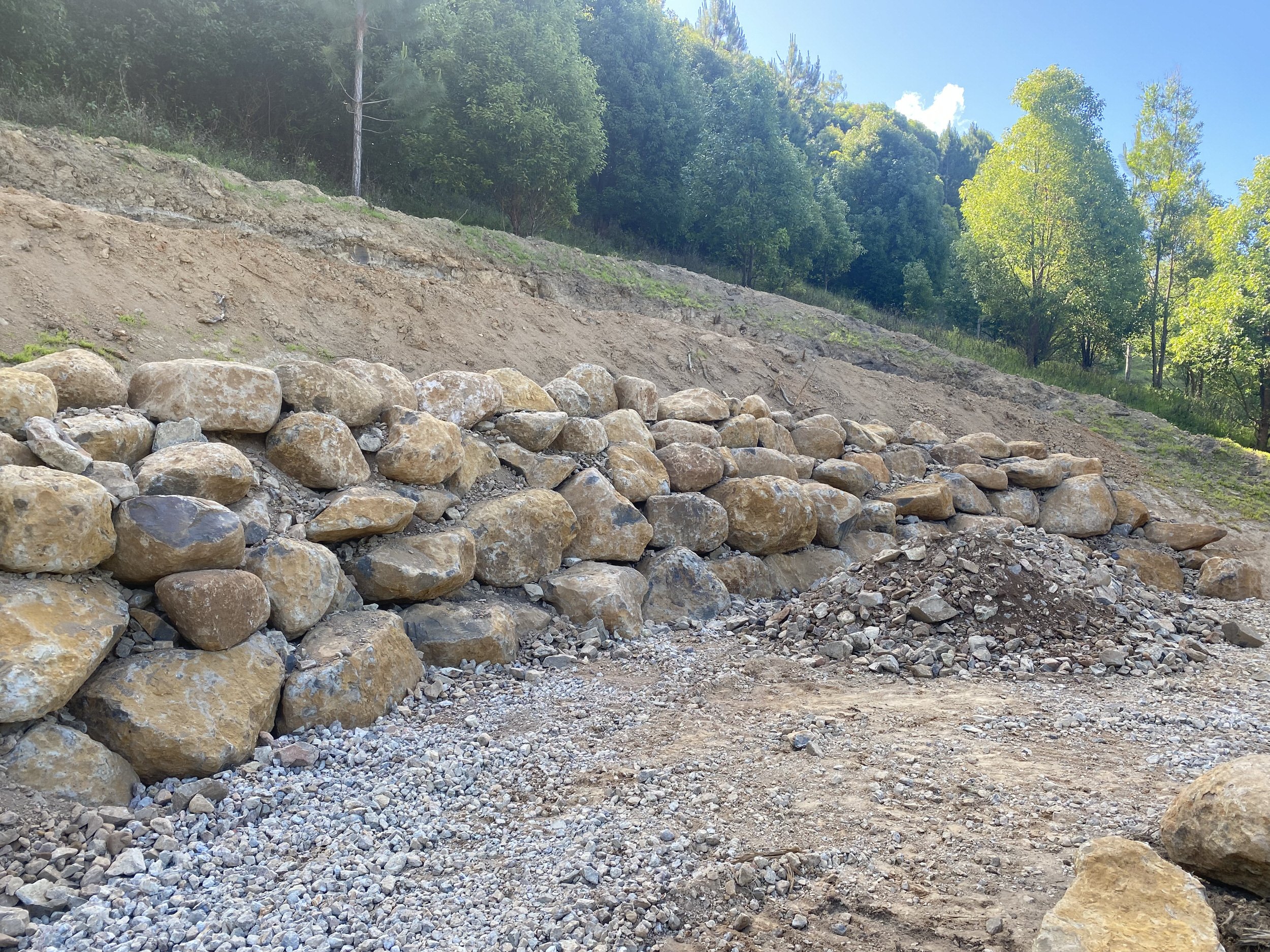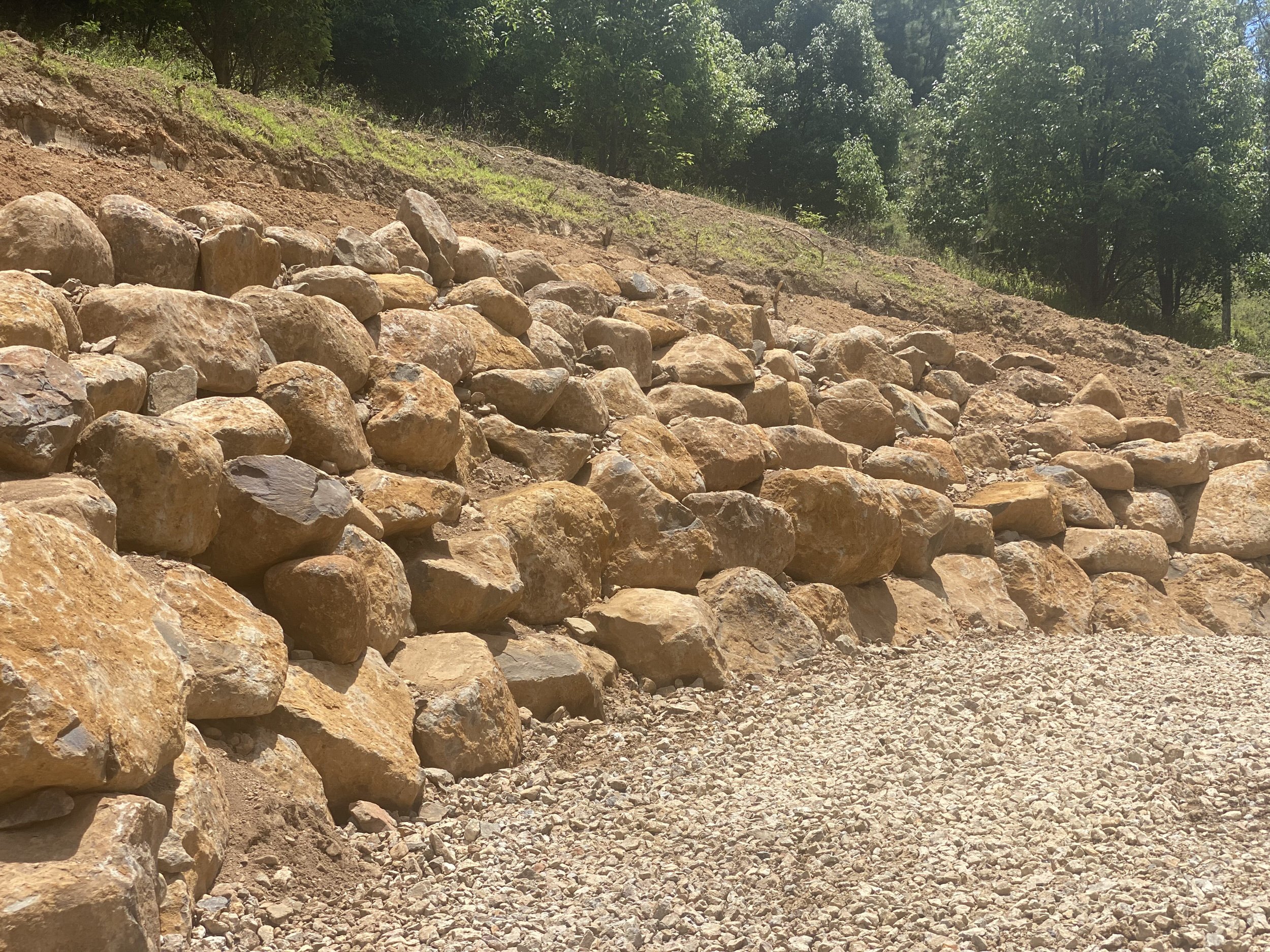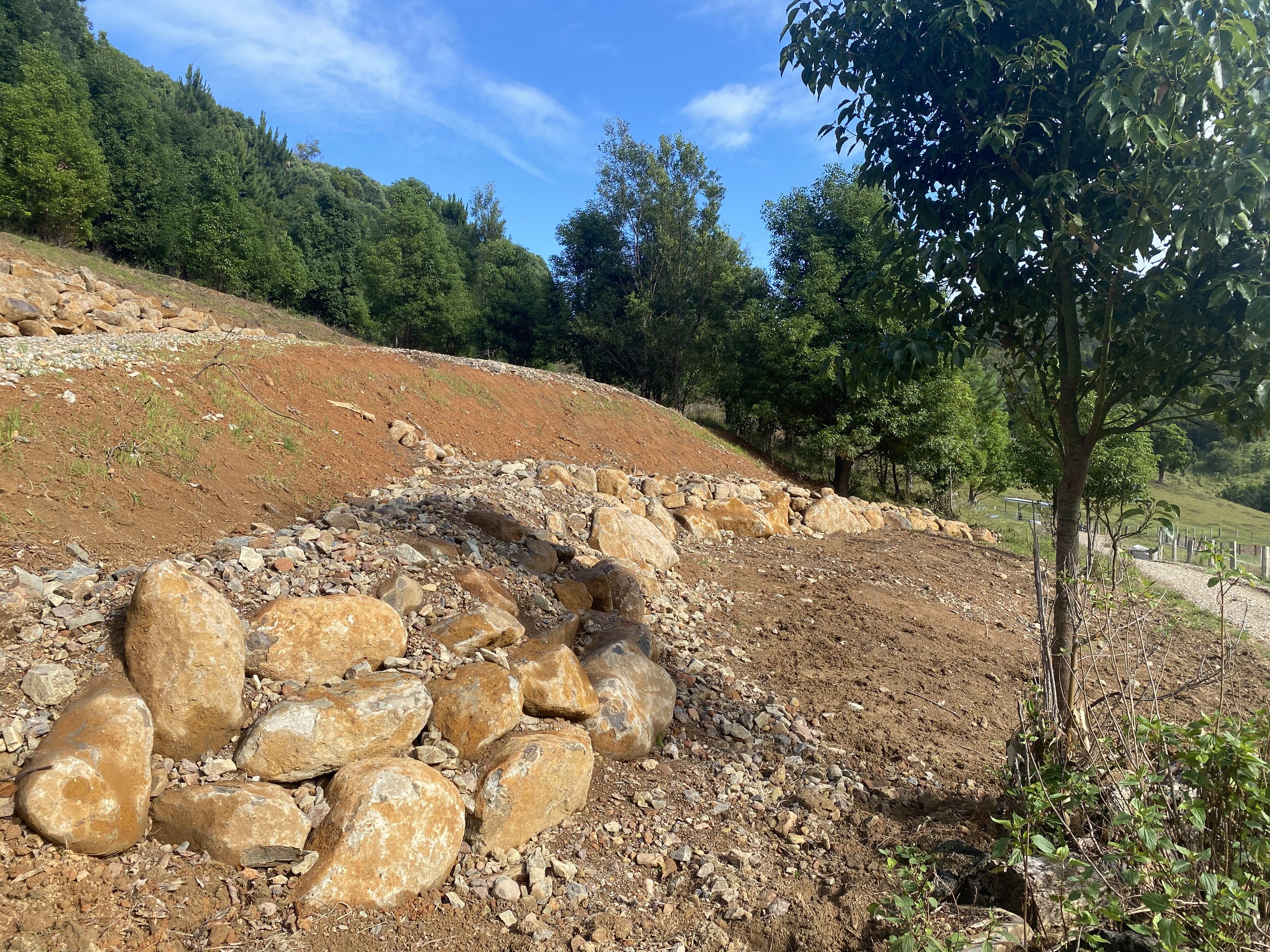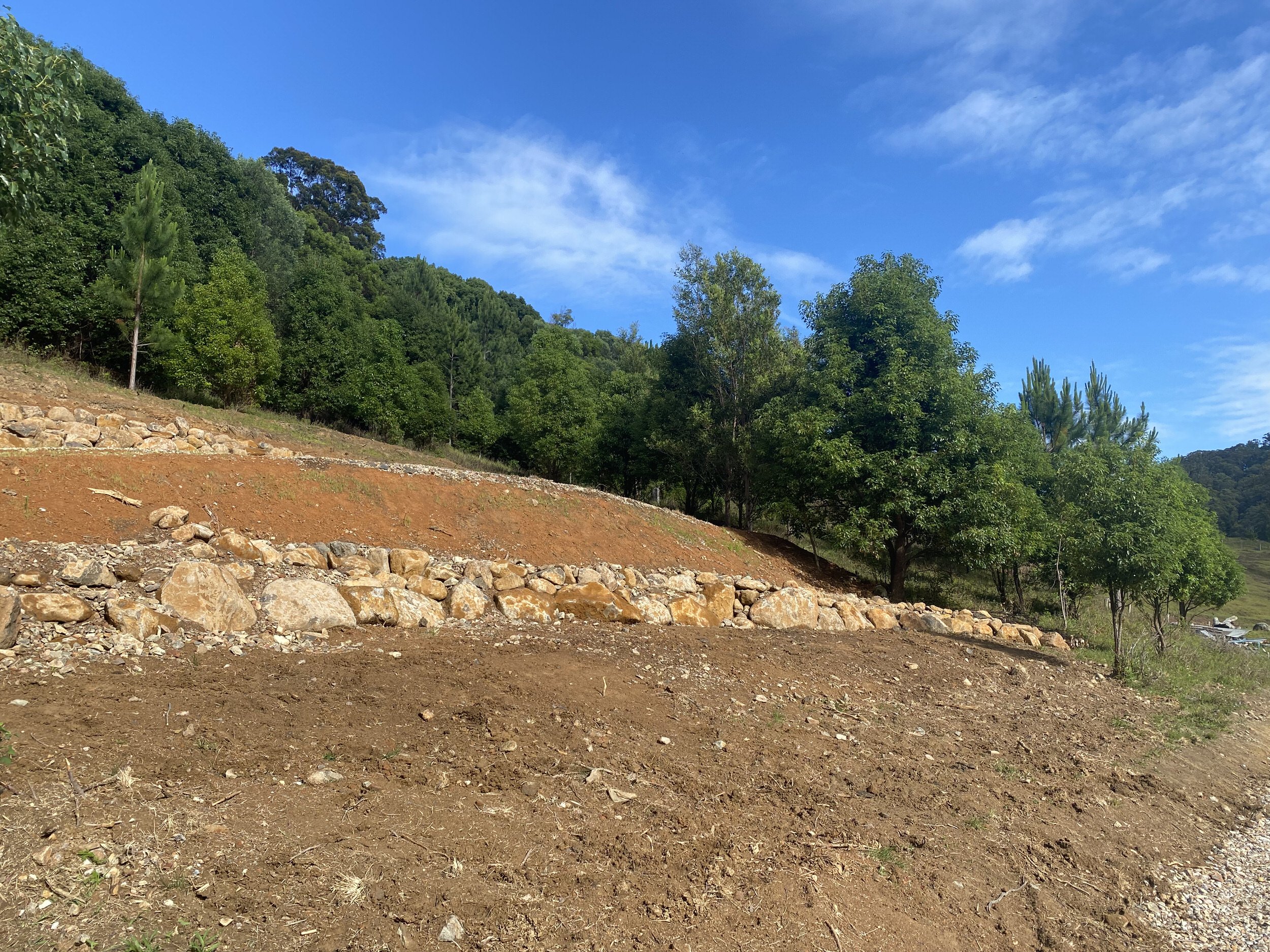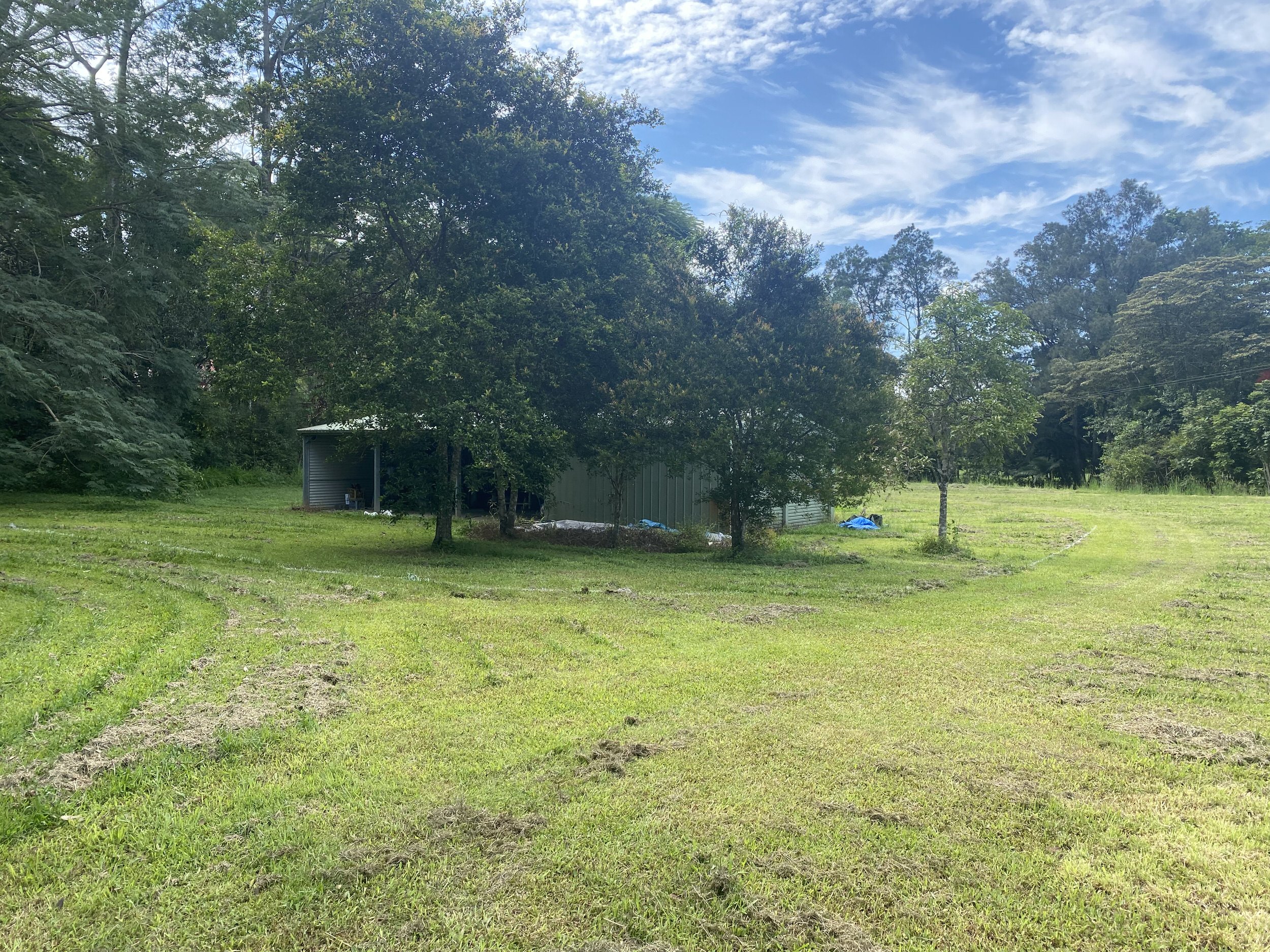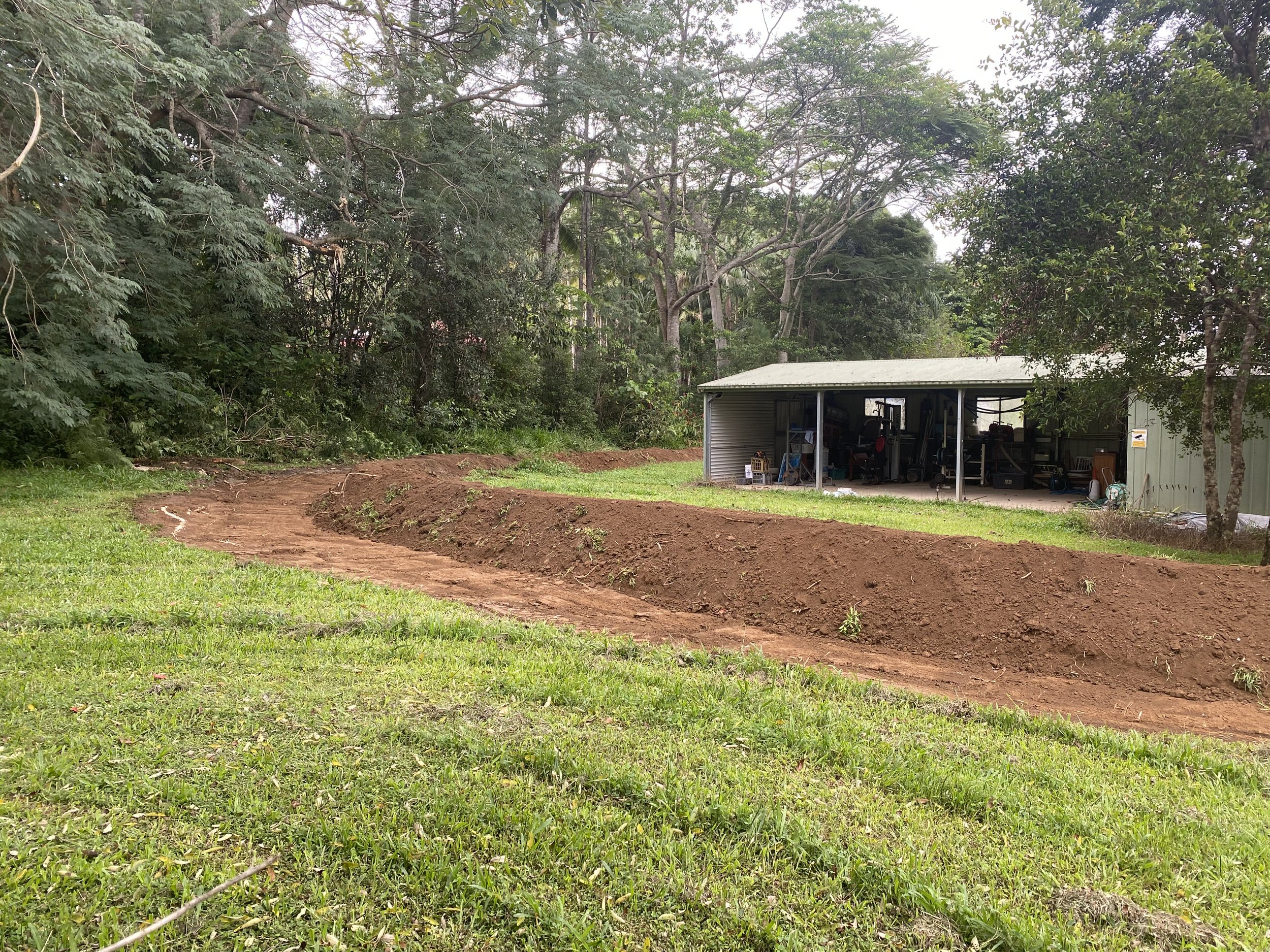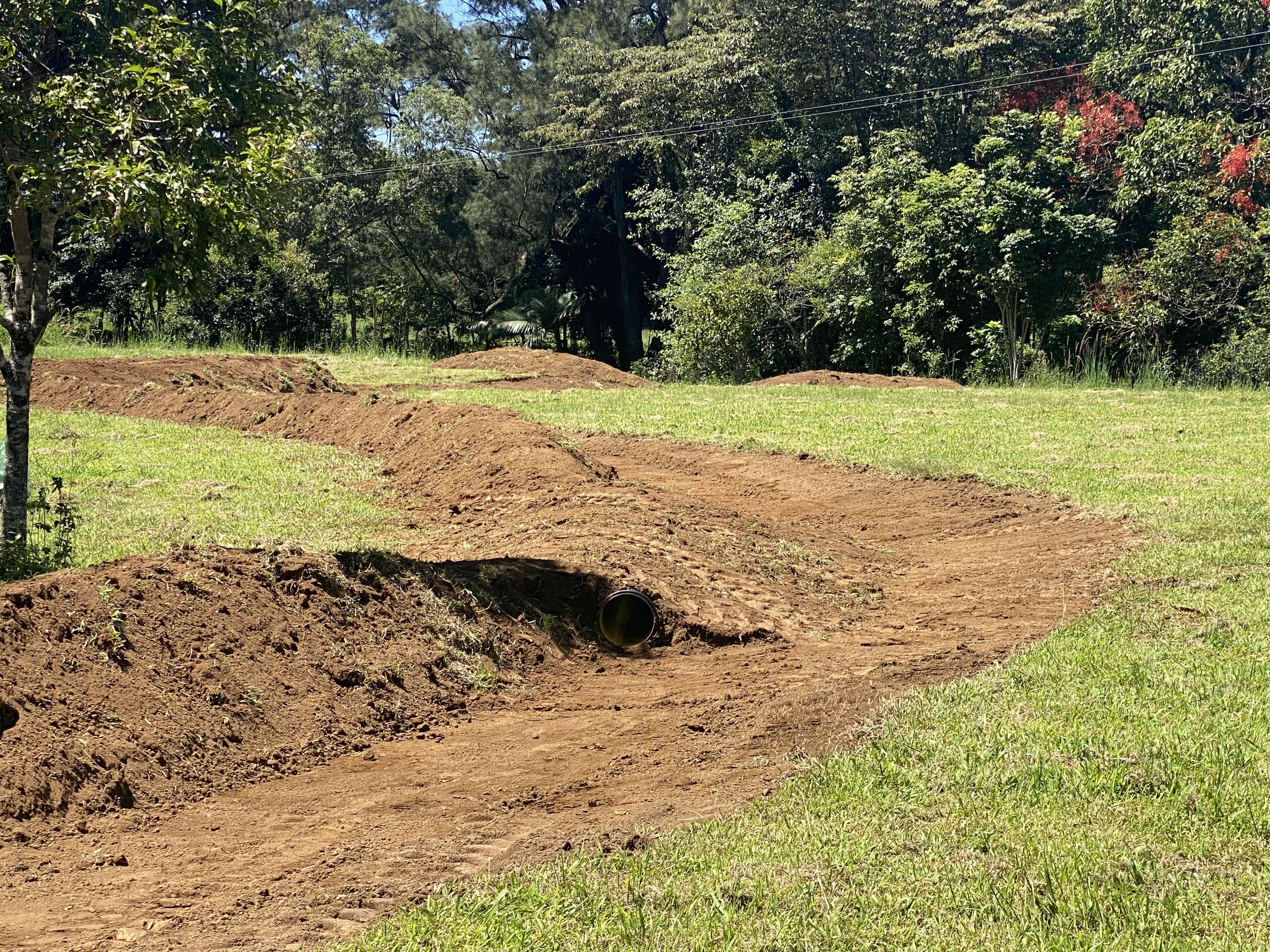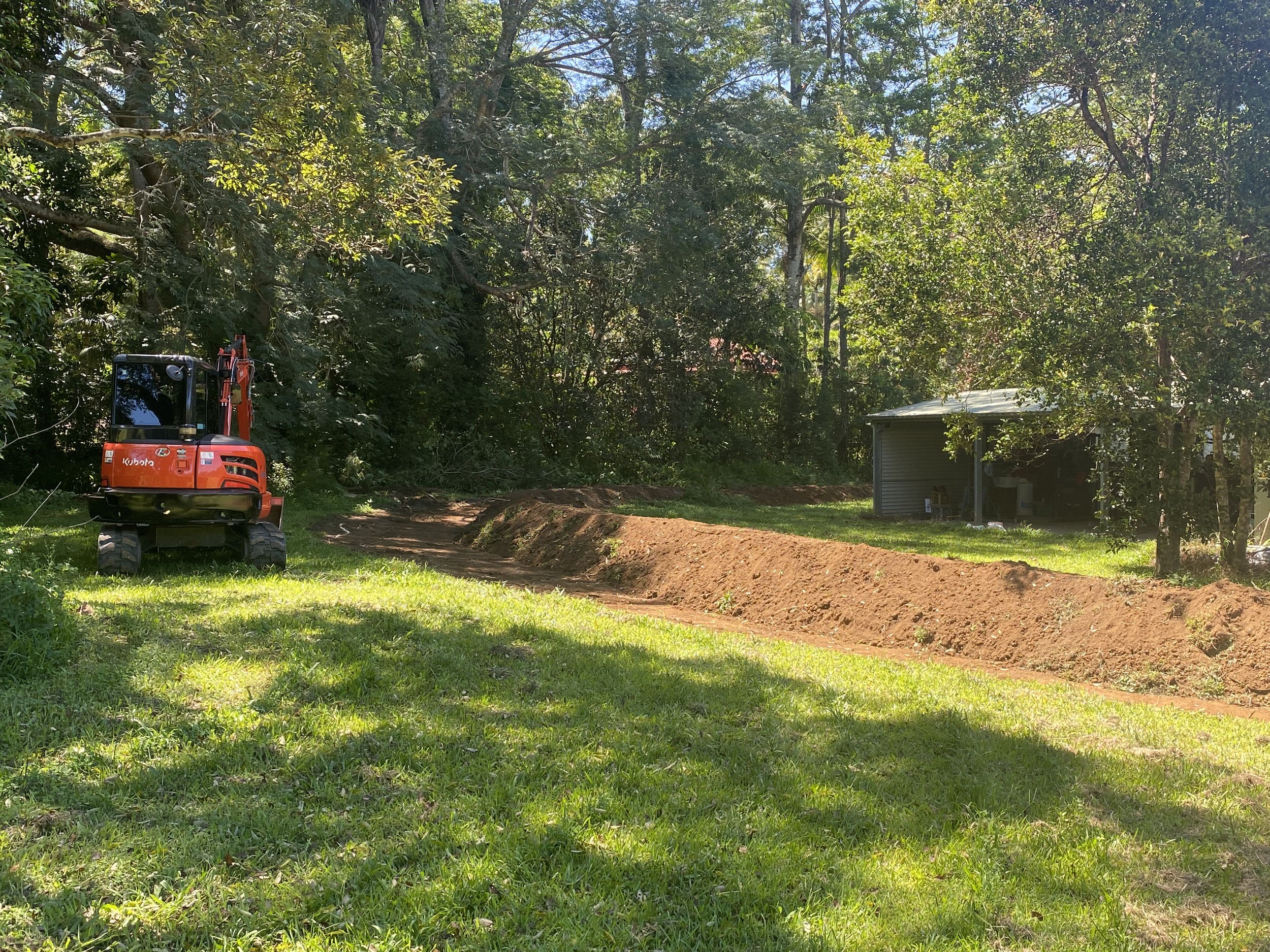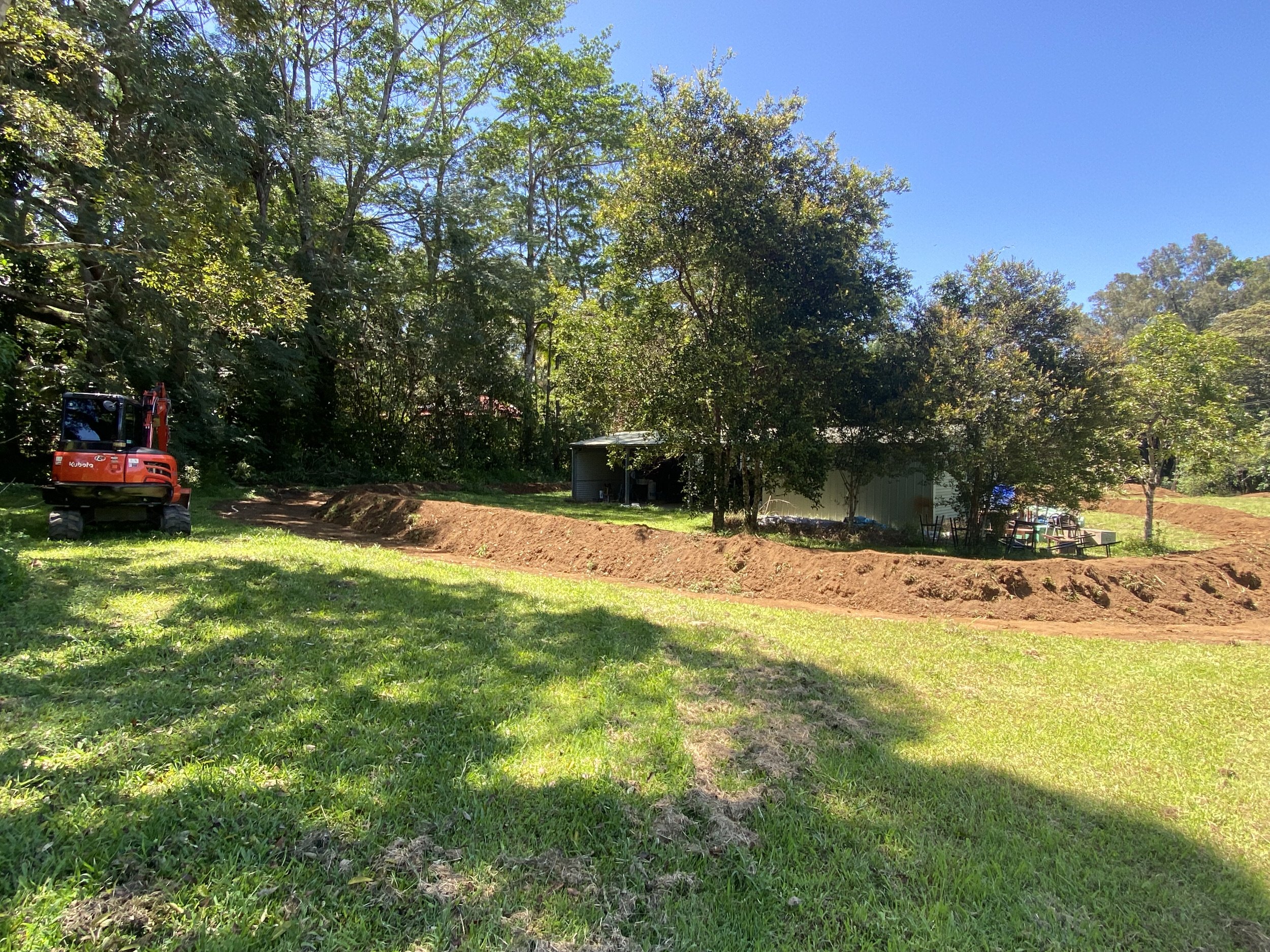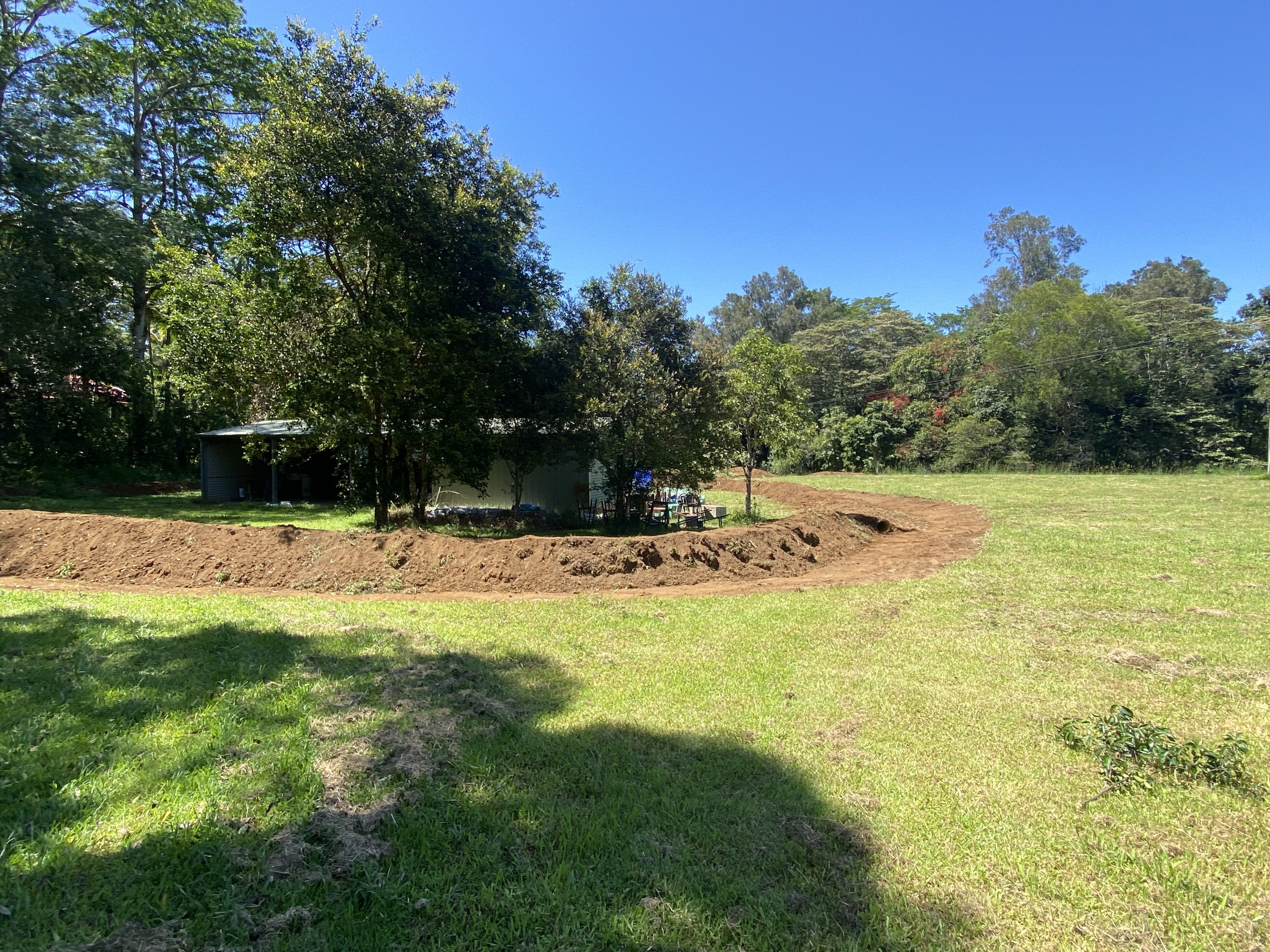
Featured Project
Crabbes Creek
Project Description
This large-scale project was undertaken to address the challenges posed by heavy rains and flooding that affected the land.
Given the scale and complexity of the issue, the project was divided into different areas, each with its own focus and objectives. One crucial aspect of the project involved implementing comprehensive water management strategies. This included creating effective drainage systems and designing water retention areas to control the flow of water during heavy rain events. By strategically placing catchment ponds or swales, the excess water could be collected and gradually released, mitigating the risk of flooding. In areas prone to erosion, measures were taken to stabilize the soil and prevent further degradation. This could involve using erosion control blankets, terracing, Rock walls and planting deep-rooted vegetation that holds the soil in place. Furthermore, the project aimed to restore and preserve natural ecosystems that could act as natural buffers against flooding. Wetlands, for example, were protected and enhanced as they naturally absorb and retain water, reducing the impact of floods. To increase the resilience of the land, a combination of native vegetation, grasses, and trees was planted in various regions. These natural buffers help in absorbing excess water, preventing soil erosion, and improving the overall ecological health of the area. Additionally, infrastructure improvements were made to roads and bridges to ensure they could withstand heavy rainfall and floods. Elevated roadways or culverts were installed to allow water to pass under the roads without causing damage. Overall, this multifaceted project was designed to mitigate the adverse effects of heavy rains and flooding, while also promoting sustainable land management practices and preserving the natural environment. It aimed to create a more resilient landscape that could better withstand future weather challenges while supporting the well-being of the community and local ecosystems.

